
September Sale
- Search for:
No products in the basket.
- Base Layers
- Technical T-Shirts
- Sailing Jackets
- Sailing Trousers
- Dinghy Footwear
- Sweatshirts
- Holebrook Samples
- Pelle Samples
- Changing Robes
- Cleaners & Proofers
- Scarves / Snood
- Dinghy Equipment
- Hi-fits / Trousers
- Hiking Equipment
- Hiking Shorts
- Spray Tops / Smocks
- Full Wetsuits
- Shorty Wetsuits
- Long John Wetsuits
- Wetsuit Tops
- Wetsuit Shorts & Trousers
- Summer Wetsuits
- Winter Wetsuits
- Children’s Wetsuits
- Men’s Wetsuits
- Women's Wetsuits
- Wetsuit Sale
- Technical Clothing
- Casual Clothing
- Hats, Gloves, Socks & Scarves
- Watersports
- Accessories Sale
- Amazing Bundle Deals
- Cables & Accessories
- Fixed GPS/plotters
- GPS Antennas
- Handheld GPS/Plotters
- Marine Cameras
- Mounting/Brackets
- Radar Scanners
- Sailing Watches
- Thermal Cameras
- Waterproof Cases
- Accessories
- Fish Finder Sonar
- Depth Instruments
- Multifunction Systems
- Speed Instruments
- Weather Instruments
- Wind Instruments
- Autopilot Accessories
- Cockpit Autopilots
- Onboard Autopilots
- Navigation Charts
- Plotting Aids
- Entertainment Accessories
- Entertainment Systems
- Speakers & Subs
- Electronics
- 4G and WIFI
- Handheld VHF Radio
- Mounted VHF Radio
- VHF Antennas
- Walkie Talkies
- Buoyancy Aids
- Lifejackets
- Children’s Life Jackets
- Commercial Lifejackets
- Harnesses/Bosuns Chair
- Lifejacket Accessories
- Safety Knives
- Safety Lights
- Safety Lines
- PLB & AIS
- Satellite Communicators
- Fire Safety Stick
- Fire Extinguishers
- GPS Tracker
- Liferaft Accessories
- Recovery Devices
- Survival Suit
- Cones & Balls
- Dye Markers
- Horns & Whistles
- RADAR Reflectors
- Bungs & Bailers
- Battery Management
- Chargers & Alternators
- Electrical Other
- Leisure Batteries
- Plugs & Connectors
- Shore Power
- Wind Generator
- USB & Phone Chargers
- Blocks & Terminals
- Circuit Breakers
- Seals / Outlets / Plugs
- Switches & Panels
- Wires & Cables
- Deck Lights
- Interior Lighting
- Navigation Lights
- Searchlights
- Head Torches
- Freshwater Pumps
- Macerator Pumps
- Service Kits
- Toilets/Waste
- Spray Guns & Connectors
- Toilet Accessories
- Toilet Parts
- Waste Tanks
- Ball Valves
- Inlet & Skin Fittings
- Metal Plumbing Fittings
- Plastic Plumbing Fittings
- Diverter Valves
- Non Return Valves
- Deionised Water
- Filters & Purification
- Taps & Sinks
- Water Heaters
- Water Tanks
- Gas Connectors
- Gas Fittings
- Bow Thruster
- Bungs And Self Bailers
- Cleats and Fairleads
- Deck Filler
- Deck Flooring & Protection
- Eye Bolts & U Bolts
- Grab Rail / Handles
- Hooks and Clips
- Latches & Catches
- Shackles & Swivels
- Tiller Extenders & Joints
- Track & Cars
- Winch Handles
- Fans & Windscoops
- Hatch & Inspection Covers
- Hatch Shades
- Hatches & Portlights
- Plastic Hatches
- Yacht / Keelboat Rope
- Dinghy Rope
- Dockline / Mooring Rope
- General Purpose Rope
- Watersports Rope
- Fender Rope
- Rope Accessories
- Furling & Reefing
- Mast, Spars & Sails
- Pins & Rings
- Rigging Screws, Adjusters & Tensioners
- Splicing & Whipping
- Thimbles & Stoppers
- Galvanising Paints
- Thinners & Solvents
- Paint Brushes
- Glue & Adhesives
- Mixing Pots & Accessories
- Resins & Epoxy
- Sealants & Caulking
- Boat Cleaner
- Cleaning Equipment
- Fabric Cleaners & Proofers
- General Cleaners
- Metal Cleaners
- Onboard Cleaner
- Polishes & Waxes
- Vinyl Cleaner
- Teak Cleaner
- All Zinc Anodes
- Zinc Shaft / Prop
- Zinc Engine / Outdrive
- All Aluminium Anodes
- Aluminium Hull
- Aluminium Shaft / Prop
- Aluminium Engine / Outdrive
- All Magnesium Anodes
- Magnesium Hull
- Magnesium Shaft / Prop
- Magnesium Engine / Outdrive
- Bow Thruster Anodes
- Hanging Anodes
- Bolts & Fixings
- Backing Pads
- Lubricants & Grease
- Power Tools
- Marine Prepacks
- Dehumidifiers
- Blowers & Exhaust
- Engine Oil & Additives
- Oil Extractors & Filters
- Shaft Bearings
- Pumps & Inflation
- Tender Accessories
- Petrol Engines
- Boat Fender
- Dock Fender
- Edging Strip
- Hooks & Pumps
- Mooring Buoy
- Step Fenders
- Anchor Bags
- Anchor Connectors
- Anchor Lines
- Anchor Windlass
- Compensators
- Personal Craft
- Engine Covers
- Fuel Tanks & Lines
- Fuel Connectors
- Kill Switches
- Propeller Bags
- Straps & Ratchets
- Flag Staff & Holder
- Lighters & Matches
- Cabinet Fridges
- Cooling Kits
- Portable Fridge/freezers
- Chandlery Misc
- Cup Holders
- Sail Knives
- Seats & Cushions
- Games & Toys
- Gift Vouchers
- Nautical Gifts
- Novelty Hats
- Anemometers
- Clocks & Barometers
- Teak Fittings
- Weather Stations
- Galley Equipment
- Tumblers & Glasses
- Water Bottles & Flask
- Inflatable Paddleboards
- Hard Paddleboards
- Inflatable Kayaks
- Handles / Bridles
- Throw Lines
- Swim Accessories
- Sea Scooter
- Free Delivery on UK mainland orders over £100 excl. Highlands / rural areas
FREE Next Working Day or Saturday delivery on orders over £150 - Choose option in basket (UK mainland, excludes Highlands rural areas, order before 3pm. Saturday delivery option available from 3PM Thursdays.)
Port, Starboard, Stern, Anchor, Tricolour, Bicolour, Masthead. We have all the navigation lights you need, many in LED as well as traditional halogen.
Showing 1–36 of 39 results
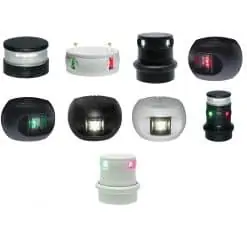
Aqua Signal Series 34 Navigation Lights
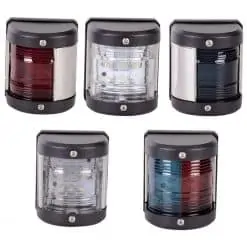
Talamex Led Navigation Lights
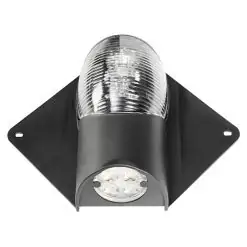
Osculati Navigation And Deck LED Light
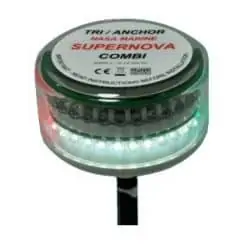
Nasa Supernova Combi Tri/Anchor LED
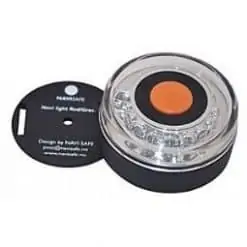
Navi Light 360- Magnetic
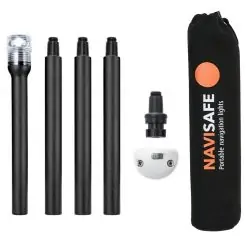
Navisafe Pole & White All Round Light With Vertical Navimount
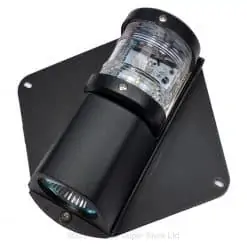
Led Combo Masthead Deck Light
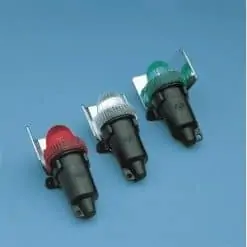
Emergency Battery Navigation Lights

Lalizas Tri-Colour Lights & Anchor Light
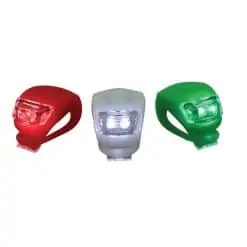
Lalizas Flexy Emergency Navigation Lights
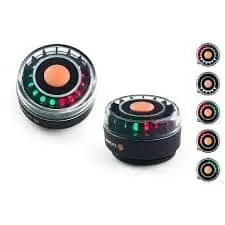
Navi Light Tricolour Magnetic

Nasa Supernova LED Tricolour Light
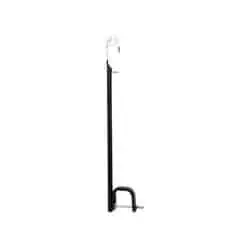
Talamex All Round Nav Light With Bracket – Battery Powered
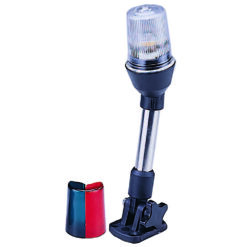
AAA All-Round LED Tricolour Pole Light
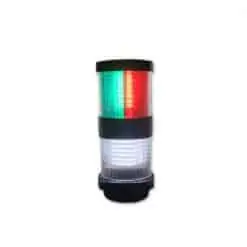
AAA LED Tricolour/Anchor Light
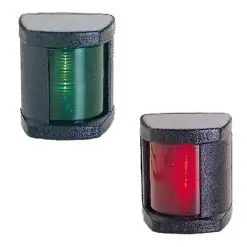
Lalizas Classic LED Navigation Light
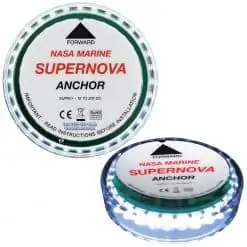
Nasa Supernova LED All round White
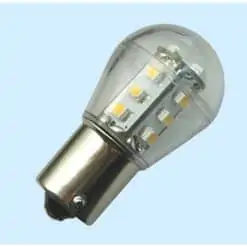
Holt Halogen 15LED

Trem All-Round Light White Folding

Navigation Light Classic N12

AAA LED Portable Navigation Light

AAA LED Vertical Mount Navigation Light Pair
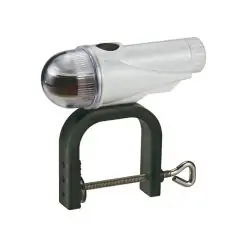
Talamex Led Duo Colour Nav Light With Bracket – Battery Powered
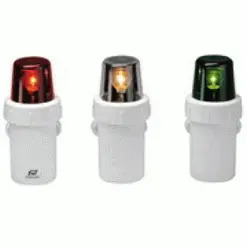
Plastimo Emergency Navigation Lights
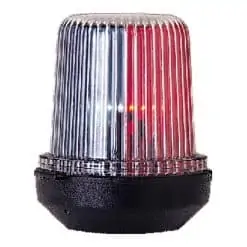
Navigation Light Classic S12
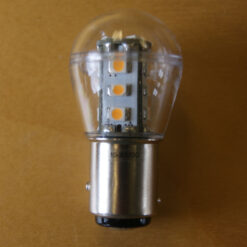
Navigation/Interior Bulb

Lalizas Navigation Light JUNIOR 7 Stern Light 135°, with white housing
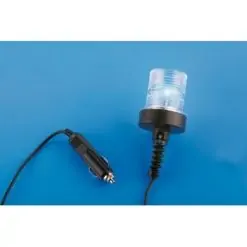
Trem Inspection Lamp

AAA All-Round LED Stern Pole Light
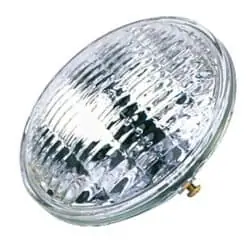
Aqua Signal Halogen Bulb 12V/50
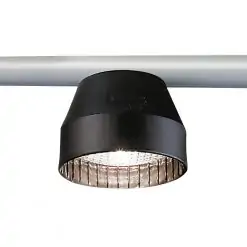
Aqua Signal Floodlight Hamburg LED

Aqua Signal S20 Port
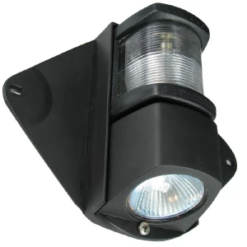
Mantagua LED Spotlight & Masthead Navigation Light

Mantagua Tiny Tri-Colour Anchor Light
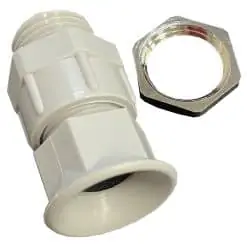
Aqua Signal Line Plug Component For S40

Aqua Signal Angle Bracket
Username or email address *
Password *
Remember me Log in
Lost your password?
Email address *
A password will be sent to your email address.
- Print This Page
- Text Size
- Scroll To Top


Welcome to the MC Sailing Association
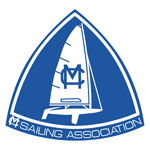
Upcoming Events
2024 regatta results.


“HISTORY OF THE SCOW” Film Proposal Woody Woodruff has been sailing scows a long time and is using his talents as a film producer to make a documentary film on scows: The Project Donate Here

© MC Sailing Association, Inc. 2024. All Rights Reserved.
sample of assignment for university
- Search entire site
- Search for a course
- Browse study areas
Analytics and Data Science
- Data Science and Innovation
- Postgraduate Research Courses
- Business Research Programs
- Undergraduate Business Programs
- Entrepreneurship
- MBA Programs
- Postgraduate Business Programs
Communication
- Animation Production
- Business Consulting and Technology Implementation
- Digital and Social Media
- Media Arts and Production
- Media Business
- Music and Sound Design
- Screen Arts and Production
- Social and Political Sciences
- Strategic Communication
- Writing and Publishing
- Postgraduate Communication Research Degrees
Design, Architecture and Building
- Architecture
- Built Environment
- DAB Research
- Public Policy and Governance
- Secondary Education
- Education (Learning and Leadership)
- Learning Design
- Postgraduate Education Research Degrees
- Primary Education
Engineering
- Civil and Environmental
- Computer Systems and Software
- Engineering Management
- Mechanical and Mechatronic
- Systems and Operations
- Telecommunications
- Postgraduate Engineering courses
- Undergraduate Engineering courses
- Sport and Exercise
- Palliative Care
- Public Health
- Nursing (Undergraduate)
- Nursing (Postgraduate)
- Health (Postgraduate)
- Research and Honours
- Health Services Management
- Child and Family Health
- Women's and Children's Health
Health (GEM)
- Coursework Degrees
- Clinical Psychology
- Genetic Counselling
- Good Manufacturing Practice
- Physiotherapy
- Speech Pathology
- Research Degrees
Information Technology
- Business Analysis and Information Systems
- Computer Science, Data Analytics/Mining
- Games, Graphics and Multimedia
- IT Management and Leadership
- Networking and Security
- Software Development and Programming
- Systems Design and Analysis
- Web and Cloud Computing
- Postgraduate IT courses
- Postgraduate IT online courses
- Undergraduate Information Technology courses
- International Studies
- Criminology
- International Relations
- Postgraduate International Studies Research Degrees
- Sustainability and Environment
- Practical Legal Training
- Commercial and Business Law
- Juris Doctor
- Legal Studies
- Master of Laws
- Intellectual Property
- Migration Law and Practice
- Overseas Qualified Lawyers
- Postgraduate Law Programs
- Postgraduate Law Research
- Undergraduate Law Programs
- Life Sciences
- Mathematical and Physical Sciences
- Postgraduate Science Programs
- Science Research Programs
- Undergraduate Science Programs
Transdisciplinary Innovation
- Creative Intelligence and Innovation
- Diploma in Innovation
- Postgraduate Research Degree
- Transdisciplinary Learning
Sample written assignments
Look at sample assignments to help you develop and enhance your academic writing skills.
How to use this page
This page features authentic sample assignments that you can view or download to help you develop and enhance your academic writing skills.
PLEASE NOTE: Comments included in these sample written assignments are intended as an educational guide only. Always check with academic staff which referencing convention you should follow. All sample assignments have been submitted using Turnitin® (anti-plagiarism software). Under no circumstances should you copy from these or any other texts.
Annotated bibliography
Annotated Bibliography: Traditional Chinese Medicine (PDF, 103KB)
Essay: Business - "Culture is a Tool Used by Management" (PDF, 496KB)
Essay: Business - "Integrating Business Perspectives - Wicked Problem" (PDF, 660KB)
Essay: Business - "Overconsumption and Sustainability" (PDF, 762KB)
Essay: Business - "Post bureaucracy vs Bureaucracy" (PDF, 609KB)
Essay: Design, Architecture & Building - "Ideas in History - Postmodernism" (PDF, 545KB)
Essay: Design, Architecture & Building - "The Context of Visual Communication Design Research Project" (PDF, 798KB)
Essay: Design, Architecture & Building - "Ideas in History - The Nurses Walk and Postmodernism" (PDF, 558KB)
Essay: Health (Childhood Obesity ) (PDF, 159KB)
Essay: Health (Improving Quality and Safety in Healthcare) (PDF, 277KB)
Essay: Health (Organisational Management in Healthcare) (PDF, 229KB)
UTS HELPS annotated Law essay
(PDF, 250KB)
Essay: Science (Traditional Chinese Medicine) (PDF, 153KB)
Literature review
Literature Review: Education (Critical Pedagogy) (PDF, 165KB)
Reflective writing
Reflective Essay: Business (Simulation Project) (PDF, 119KB)
Reflective Essay: Nursing (Professionalism in Context) (PDF, 134KB)
Report: Business (Management Decisions and Control) (PDF, 244KB)
Report: Education (Digital Storytelling) (PDF, 145KB)
Report: Education (Scholarly Practice) (PDF, 261KB)
Report: Engineering Communication (Flood Mitigation & Water Storage) (PDF, 1MB)
UTS acknowledges the Gadigal people of the Eora Nation, the Boorooberongal people of the Dharug Nation, the Bidiagal people and the Gamaygal people, upon whose ancestral lands our university stands. We would also like to pay respect to the Elders both past and present, acknowledging them as the traditional custodians of knowledge for these lands.

Assignment Samples & Examples

Table of Contents
Assignment samples, assignment instructions & rubrics, useful tools to plan assignments, useful tools to search & organize sources, useful tools to analyze sources & develop your ideas, writing strategies, learning strategies.
Here you can find the complete list of all the student assignment samples as well as practical tools and examples that are hyperlinked as PDF, Word or Excel files across Resource Pages.
This is a full literature review paper written by an OISE student on the topic of Computer-mediated Communication (CMC) and Written Corrective Feedback (WCF) in Writing Centers (WC). Throughout the paper, you will find several annotations. Yellow annotations refer to the structure of the paper, its content and how ideas are developed. Purple annotations refer to writing elements and language elements (e.g., paragraphs, paraphrases, summaries, quotes, stance and voice, cohesion, etc.).
This is an experiential reflection assignment written by OISE student Hongyu Chen about their observations of a Mandarin language class and language teaching methodologies.
These are two examples of annotated bibliographies with slightly different structures. These examples are illustrated and hyperlinked in the following Resource Page:
This is a rubric for an Annotated Bibliography assignment that shows the professor’s expectations and evaluation criteria. Students can use these evaluation criteria as guidelines when working on the assignment. This rubric is hyperlinked in the following Resource Page:
Download this template and use it when planning your work for an assignment. This template is hyperlinked in the following Resource Page:
Download this template and use it to brainstorm keywords for core concepts and related terms when searching sources for your assignment This template is hyperlinked in the following Resource Page:
Download this template and use it to keep track of your library searches when looking for sources for your assignment. At the top, you’ll find an example of how to use the template. This template is hyperlinked in the following Resource Page:
Download this template spreadsheet and use it to record and organize the bibliographic information of the sources you found. It will help you keep track of the sources collected. At the top, you’ll find an example of how to use this spreadsheet. This template is hyperlinked in the following Resource Page:
Download this template spreadsheet and use it to record and organize the key information of the sources you found + your notes about the relevant points from each source after reading them. It will help you when you analyze your sources and need to develop ideas for your assignment. At the top, you’ll find an example of how to use this spreadsheet. This template is hyperlinked in the following Resource Page:
Download this spreadsheet for an example of how you can summarize findings and record your analysis for each source you’ve read. The research topic in this example is assessment practices of online mathematics and statistics courses at the undergraduate level, with a focus on students’ and instructors’ perspectives. You can first browse the overall information of the example sources and pay attention to the final two columns for findings and critical analysis. This example is hyperlinked in the following Resource Page:
This is an example of how to use a table to organize your ideas and visualize the connections among them. These will become the points to include in your assignment. This example is hyperlinked in the following Resource Page:
This is an example of how to use a concept map to organize your ideas and visualize the connections among them. These will become the points to include in your assignment. This example is hyperlinked in the following Resource Page:
This is an example of how to use a literature review matrix to organize your ideas and visualize the connections among them. These will become the points to include in your assignment. This example is hyperlinked in the following Resource Page:
This is an example of how to use an outline to organize your ideas and visualize the connections among them. These will become the points to include in your assignment. This example is hyperlinked in the following Resource Page:
For users with accessibility needs: this example shows a well-structured paragraph featuring three main elements: a topic sentence, supporting statements and a conclusion or transition sentence. For all the other users: you can find this example as an image in the following Resource Page: What are Paragraphs.
For users with accessibility needs: this example shows the structure of a paragraph using the sandwich strategy. For all the other users: you can find this example as an image in the following Resource Page: How to Write Paragraphs
For users with accessibility needs: this example shows how different voices are used within a paragraph. For all the other users: you can find this example as an image in the following Resource Page: What are stance & voice and how to apply them in academic writing
This example with annotations shows how a student writer takes a stance and shifts between voices in a paragraph about Mathematics programs. This example is hyperlinked in the following Resource Page:
- How it works

Academic Assignment Samples and Examples
Are you looking for someone to write your academic assignment for you? This is the right place for you. To showcase the quality of the work that can be expected from ResearchProspect, we have curated a few samples of academic assignments. These examples have been developed by professional writers here. Place your order with us now.
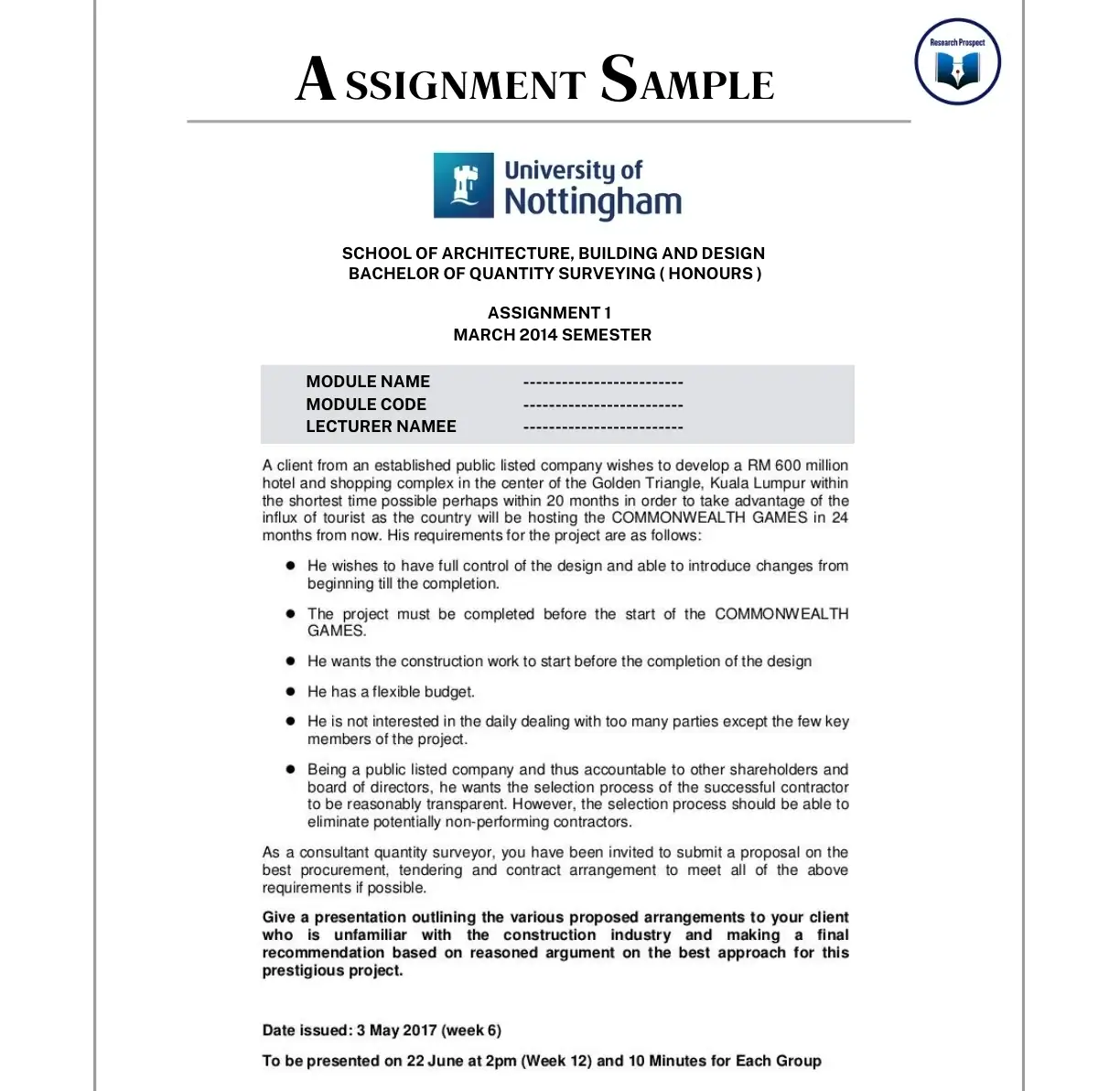
Assignment Sample
Discipline: Sociology
Quality: Approved / Passed
Discipline: Construction
Quality: 1st / 78%
Discipline: Accounting & Finance
Quality: 2:1 / 69%
Undergraduate
Discipline: Bio-Medical
Quality: 1st / 76%
Discipline: Statistics
Quality: 1st / 73%
Discipline: Health and Safety
Quality: 2:1 / 68%
Discipline: Business
Quality: 2:1 / 67%
Discipline: Medicine
Quality: 2:1 / 66%
Discipline: Religion Theology
Quality: 2:1 / 64%
Discipline: Project Management
Quality: 2:1 / 63%
Discipline: Website Development
Discipline: Fire and Construction
Discipline: Environmental Management
Discipline: Early Child Education
Quality: 1st / 72%
Analysis of a Business Environment: Coffee and Cake Ltd (CC Ltd)
Business Strategy
Application of Project Management Using the Agile Approach ….
Project Management
Assessment of British Airways Social Media Posts
Critical annotation, global business environment (reflective report assignment), global marketing strategies, incoterms, ex (exw), free (fob, fca), cost (cpt, cip), delivery …., it systems strategy – the case of oxford university, management and organisation in global environment, marketing plan for “b airlines”, prepare a portfolio review and remedial options and actions …., systematic identification, analysis, and assessment of risk …., the exploratory problem-solving play and growth mindset for …..
Childhood Development
The Marketing Plan- UK Sustainable Energy Limited
Law assignment.
Law Case Study
To Analyse User’s Perception towards the Services Provided by Their…
Assignment Samples
Research Methodology
Discipline: Civil Engineering
Discipline: Health & Manangement
Our Assignment Writing Service Features
Subject specialists.
We have writers specialising in their respective fields to ensure rigorous quality control.
We are reliable as we deliver all your work to you and do not use it in any future work.
We ensure that our work is 100% plagiarism free and authentic and all references are cited.
Thoroughly Researched
We perform thorough research to get accurate content for you with proper citations.
Excellent Customer Service
To resolve your issues and queries, we provide 24/7 customer service
Our prices are kept at a level that is affordable for everyone to ensure maximum help.
Trusted by over 1000,000 students
Thousands of students have used ResearchProspect academic support services to improve their grades. Why are you waiting?
ResearchProspect provides different kinds of writing. I going from simple essays and now my huge assignment in management is completed successfully. Will not even hesitate to order my dissertation here especially now when I know quality is confirmed!
ResearchProspect is very good. When I was looking for essay or dissertation services, one of my friends suggested me to work with this. And I must say they are very professional also provide very high quality services.
Dissertation authoring has been one of my difficult tasks so far. Whenever my friend advised I try out ResearchProspect., I thought it would be a great chance to in fact get the work done. The final output was magnificent and I am glad that I used your services.
Larry Sullivan L.
Frequently Ask Questions?
How can these samples help you.
The assignment writing samples we provide help you by showing you versions of the finished item. It’s like having a picture of the cake you’re aiming to make when following a recipe.
Assignments that you undertake are a key part of your academic life; they are the usual way of assessing your knowledge on the subject you’re studying.
There are various types of assignments: essays, annotated bibliographies, stand-alone literature reviews, reflective writing essays, etc. There will be a specific structure to follow for each of these. Before focusing on the structure, it is best to plan your assignment first. Your school will have its own guidelines and instructions, you should align with those. Start by selecting the essential aspects that need to be included in your assignment.
Based on what you understand from the assignment in question, evaluate the critical points that should be made. If the task is research-based, discuss your aims and objectives, research method, and results. For an argumentative essay, you need to construct arguments relevant to the thesis statement.
Your assignment should be constructed according to the outline’s different sections. This is where you might find our samples so helpful; inspect them to understand how to write your assignment.
Adding headings to sections can enhance the clarity of your assignment. They are like signposts telling the reader what’s coming next.
Where structure is concerned, our samples can be of benefit. The basic structure is of three parts: introduction, discussion, and conclusion. It is, however, advisable to follow the structural guidelines from your tutor.
For example, our master’s sample assignment includes lots of headings and sub-headings. Undergraduate assignments are shorter and present a statistical analysis only.
If you are still unsure about how to approach your assignment, we are here to help, and we really can help you. You can start by just asking us a question with no need to commit. Our writers are able to assist by guiding you through every step of your assignment.
Who will write my assignment?
We have a cherry-picked writing team. They’ve been thoroughly tested and checked out to verify their skills and credentials. You can be sure our writers have proved they can write for you.
What if I have an urgent assignment? Do your delivery days include the weekends?
No problem. Christmas, Boxing Day, New Year’s Eve – our only days off. We know you want weekend delivery, so this is what we do.
Explore More Samples
View our professional samples to be certain that we have the portofilio and capabilities to deliver what you need.
USEFUL LINKS
LEARNING RESOURCES

COMPANY DETAILS

- How It Works
Purdue Online Writing Lab Purdue OWL® College of Liberal Arts
Common Writing Assignments

Welcome to the Purdue OWL
This page is brought to you by the OWL at Purdue University. When printing this page, you must include the entire legal notice.
Copyright ©1995-2018 by The Writing Lab & The OWL at Purdue and Purdue University. All rights reserved. This material may not be published, reproduced, broadcast, rewritten, or redistributed without permission. Use of this site constitutes acceptance of our terms and conditions of fair use.
These OWL resources will help you understand and complete specific types of writing assignments, such as annotated bibliographies, book reports, and research papers. This section also includes resources on writing academic proposals for conference presentations, journal articles, and books.
Understanding Writing Assignments
This resource describes some steps you can take to better understand the requirements of your writing assignments. This resource works for either in-class, teacher-led discussion or for personal use.
Argument Papers
This resource outlines the generally accepted structure for introductions, body paragraphs, and conclusions in an academic argument paper. Keep in mind that this resource contains guidelines and not strict rules about organization. Your structure needs to be flexible enough to meet the requirements of your purpose and audience.
Research Papers
This handout provides detailed information about how to write research papers including discussing research papers as a genre, choosing topics, and finding sources.
Exploratory Papers
This resource will help you with exploratory/inquiry essay assignments.
Annotated Bibliographies
This handout provides information about annotated bibliographies in MLA, APA, and CMS.
Book Report
This resource discusses book reports and how to write them.
Definitions
This handout provides suggestions and examples for writing definitions.
Essays for Exams
While most OWL resources recommend a longer writing process (start early, revise often, conduct thorough research, etc.), sometimes you just have to write quickly in test situations. However, these exam essays can be no less important pieces of writing than research papers because they can influence final grades for courses, and/or they can mean the difference between getting into an academic program (GED, SAT, GRE). To that end, this resource will help you prepare and write essays for exams.
Book Review
This resource discusses book reviews and how to write them.
Academic Proposals
This resource will help undergraduate, graduate, and professional scholars write proposals for academic conferences, articles, and books.
In this section
Subsections.
Search form
How to write the best college assignments.
By Lois Weldon
When it comes to writing assignments, it is difficult to find a conceptualized guide with clear and simple tips that are easy to follow. That’s exactly what this guide will provide: few simple tips on how to write great assignments, right when you need them. Some of these points will probably be familiar to you, but there is no harm in being reminded of the most important things before you start writing the assignments, which are usually determining on your credits.
The most important aspects: Outline and Introduction
Preparation is the key to success, especially when it comes to academic assignments. It is recommended to always write an outline before you start writing the actual assignment. The outline should include the main points of discussion, which will keep you focused throughout the work and will make your key points clearly defined. Outlining the assignment will save you a lot of time because it will organize your thoughts and make your literature searches much easier. The outline will also help you to create different sections and divide up the word count between them, which will make the assignment more organized.
The introduction is the next important part you should focus on. This is the part that defines the quality of your assignment in the eyes of the reader. The introduction must include a brief background on the main points of discussion, the purpose of developing such work and clear indications on how the assignment is being organized. Keep this part brief, within one or two paragraphs.
This is an example of including the above mentioned points into the introduction of an assignment that elaborates the topic of obesity reaching proportions:
Background : The twenty first century is characterized by many public health challenges, among which obesity takes a major part. The increasing prevalence of obesity is creating an alarming situation in both developed and developing regions of the world.
Structure and aim : This assignment will elaborate and discuss the specific pattern of obesity epidemic development, as well as its epidemiology. Debt, trade and globalization will also be analyzed as factors that led to escalation of the problem. Moreover, the assignment will discuss the governmental interventions that make efforts to address this issue.
Practical tips on assignment writing
Here are some practical tips that will keep your work focused and effective:
– Critical thinking – Academic writing has to be characterized by critical thinking, not only to provide the work with the needed level, but also because it takes part in the final mark.
– Continuity of ideas – When you get to the middle of assignment, things can get confusing. You have to make sure that the ideas are flowing continuously within and between paragraphs, so the reader will be enabled to follow the argument easily. Dividing the work in different paragraphs is very important for this purpose.
– Usage of ‘you’ and ‘I’ – According to the academic writing standards, the assignments should be written in an impersonal language, which means that the usage of ‘you’ and ‘I’ should be avoided. The only acceptable way of building your arguments is by using opinions and evidence from authoritative sources.
– Referencing – this part of the assignment is extremely important and it takes a big part in the final mark. Make sure to use either Vancouver or Harvard referencing systems, and use the same system in the bibliography and while citing work of other sources within the text.
– Usage of examples – A clear understanding on your assignment’s topic should be provided by comparing different sources and identifying their strengths and weaknesses in an objective manner. This is the part where you should show how the knowledge can be applied into practice.
– Numbering and bullets – Instead of using numbering and bullets, the academic writing style prefers the usage of paragraphs.
– Including figures and tables – The figures and tables are an effective way of conveying information to the reader in a clear manner, without disturbing the word count. Each figure and table should have clear headings and you should make sure to mention their sources in the bibliography.
– Word count – the word count of your assignment mustn’t be far above or far below the required word count. The outline will provide you with help in this aspect, so make sure to plan the work in order to keep it within the boundaries.
The importance of an effective conclusion
The conclusion of your assignment is your ultimate chance to provide powerful arguments that will impress the reader. The conclusion in academic writing is usually expressed through three main parts:
– Stating the context and aim of the assignment
– Summarizing the main points briefly
– Providing final comments with consideration of the future (discussing clear examples of things that can be done in order to improve the situation concerning your topic of discussion).
Normal 0 false false false EN-US X-NONE X-NONE /* Style Definitions */ table.MsoNormalTable {mso-style-name:"Table Normal"; mso-tstyle-rowband-size:0; mso-tstyle-colband-size:0; mso-style-noshow:yes; mso-style-priority:99; mso-style-parent:""; mso-padding-alt:0in 5.4pt 0in 5.4pt; mso-para-margin:0in; mso-para-margin-bottom:.0001pt; mso-pagination:widow-orphan; font-size:11.0pt; font-family:"Calibri","sans-serif"; mso-ascii-font-family:Calibri; mso-ascii-theme-font:minor-latin; mso-hansi-font-family:Calibri; mso-hansi-theme-font:minor-latin;}
Lois Weldon is writer at Uk.bestdissertation.com . Lives happily at London with her husband and lovely daughter. Adores writing tips for students. Passionate about Star Wars and yoga.
7 comments on “How To Write The Best College Assignments”
Extremely useful tip for students wanting to score well on their assignments. I concur with the writer that writing an outline before ACTUALLY starting to write assignments is extremely important. I have observed students who start off quite well but they tend to lose focus in between which causes them to lose marks. So an outline helps them to maintain the theme focused.
Hello Great information…. write assignments
Well elabrated
Thanks for the information. This site has amazing articles. Looking forward to continuing on this site.
This article is certainly going to help student . Well written.
Really good, thanks
Practical tips on assignment writing, the’re fantastic. Thank you!
Leave a comment
Your email address will not be published. Required fields are marked *
Save my name, email, and website in this browser for the next time I comment.
- Stanford Home
- Maps & Directions
- Search Stanford
- Emergency Info
- Terms of Use
- Non-Discrimination
- Accessibility
© Stanford University , Stanford , California 94305 .
- Utility Menu
GA4 Tracking Code

fa51e2b1dc8cca8f7467da564e77b5ea
Make a Gift
- Join Our Email List
How to Write an Effective Assignment
At their base, all assignment prompts function a bit like a magnifying glass—they allow a student to isolate, focus on, inspect, and interact with some portion of your course material through a fixed lens of your choosing.

The Key Components of an Effective Assignment Prompt
All assignments, from ungraded formative response papers all the way up to a capstone assignment, should include the following components to ensure that students and teachers understand not only the learning objective of the assignment, but also the discrete steps which they will need to follow in order to complete it successfully:
- Preamble. This situates the assignment within the context of the course, reminding students of what they have been working on in anticipation of the assignment and how that work has prepared them to succeed at it.
- Justification and Purpose. This explains why the particular type or genre of assignment you’ve chosen (e.g., lab report, policy memo, problem set, or personal reflection) is the best way for you and your students to measure how well they’ve met the learning objectives associated with this segment of the course.
- Mission. This explains the assignment in broad brush strokes, giving students a general sense of the project you are setting before them. It often gives students guidance on the evidence or data they should be working with, as well as helping them imagine the audience their work should be aimed at.
- Tasks. This outlines what students are supposed to do at a more granular level: for example, how to start, where to look, how to ask for help, etc. If written well, this part of the assignment prompt ought to function as a kind of "process" rubric for students, helping them to decide for themselves whether they are completing the assignment successfully.
- Submission format. This tells students, in appropriate detail, which stylistic conventions they should observe and how to submit their work. For example, should the assignment be a five-page paper written in APA format and saved as a .docx file? Should it be uploaded to the course website? Is it due by Tuesday at 5:00pm?
For illustrations of these five components in action, visit our gallery of annotated assignment prompts .
For advice about creative assignments (e.g. podcasts, film projects, visual and performing art projects, etc.), visit our Guidance on Non-Traditional Forms of Assessment .
For specific advice on different genres of assignment, click below:
Response Papers
Problem sets, source analyses, final exams, concept maps, research papers, oral presentations, poster presentations.
- Learner-Centered Design
- Putting Evidence at the Center
- What Should Students Learn?
- Start with the Capstone
- Gallery of Annotated Assignment Prompts
- Scaffolding: Using Frequency and Sequencing Intentionally
- Curating Content: The Virtue of Modules
- Syllabus Design
- Catalogue Materials
- Making a Course Presentation Video
- Teaching Teams
- In the Classroom
- Getting Feedback
- Equitable & Inclusive Teaching
- Advising and Mentoring
- Teaching and Your Career
- Teaching Remotely
- Tools and Platforms
- The Science of Learning
- Bok Publications
- Other Resources Around Campus
HGSE Peer-to-Peer Services
Your home for writing, verbal communication, and AI support
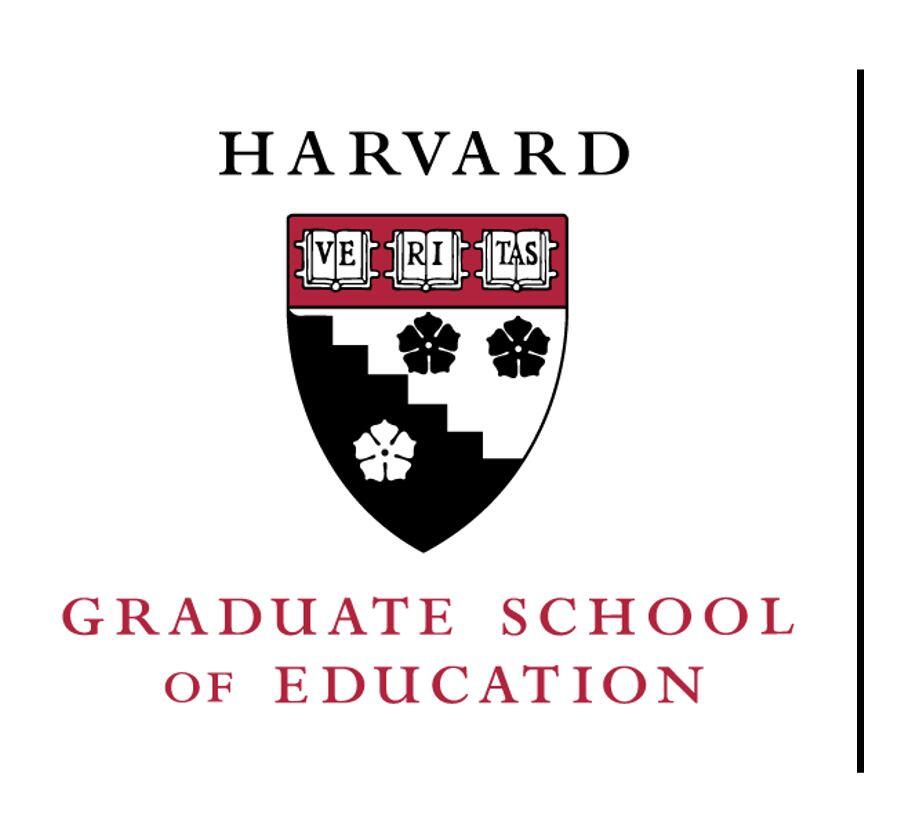
- Gutman Library
- LIBRARY FAQ
Typical Assignments
The descriptions and examples below illustrate some of the most common writing assignments that students receive at HGSE. However, we want to stress that the most important sources of information regarding any written assignment in your classes are your course syllabus and your teaching team. You are encouraged to always carefully read your syllabus or writing assignment prompts to make sure that you fully understand what is expected. You are also encouraged to ask questions and seek clarification from your teaching team before beginning to write.
For more information on assignment genres, see Learning Materials under the Resources page.
Academic Papers
Many midterm or final assignments can be considered “academic papers.” These assignmentsask students to integrate the learning from the course as they answer a critical question. The papers require students to put the readings from the course (and sometimes additional research literature) in conversation in the service of a well-argued thesis. Students may be asked to answer a broad question about the themes of the course, analyze conflicting ideas in important research. As academic papers, these papers are expected to be properly formatted, using APA. They are also expected to adhere to conventional academic paper structure:
An introduction that begins by setting the broad context and narrows to a clear thesis, and (if applicable), a road map for how the paper will proceed.
Body paragraphs that provide the elaboration of the thesis that is grounded in readings from the course.
A conclusion that directs the reader towards broader implications of the paper’s argument or directions for future consideration.
Case Analyses
Cases provide students with “stories from real life contexts” where usually a case protagonist (a person or an organization) encounters a problem or challenge of practice. The case lays out the many details and issues that surround the problem. Most case analyses assignments ask students to do four things:
Diagnose the key problem(s) or challenge(s) in the case.
Consider multiple possible solutions.
Offer what you think is the best solutions to the problem, and offer your rationale for that choice.
Support your arguments (both about what the problem is, and how to solve it) with evidence from the case and from the course readings.
Journals, Memos and Reflective Papers
To help students synthesize the readings in the course in a gradual, consistent manner, manyfaculty ask students to complete written assignments that reflect on them, or on aspects of the course. These may be called journals, memos or reflections, and typically:
Provide students the opportunity to “make sense” of what they are reading and learning.
Do not require a formal academic format.
Should still be well-argued, well-organized and well written (and properly cited) essays.
Literature Reviews
A literature review is a survey of scholarly work on a specific topic. It should provide an overview of current knowledge, including relevant theories and methods. It should also identify gaps in the existing literature. A literature review should be more than a summary of existing research; it should include an explicit thesis and argument. The steps of a literature review are as follows:
Research what has been written on a given topic (requires citations)
Evaluate the sources
Synthesize the research (not just annotated bibliography)
Critique the literature
Identify areas for future research
Policy Memos
In these assignments, students are required to identify a policy problem and argue for a specific policy response. They should offer their rationale for that choice and contrast with other potential options. Policy memos are often characterized by the following features:
Short, clear, and to the point, 1-5 pages
Summarize and analyze ideas
Make recommendations
Role play position
May allow use of bullet points to group ideas
Little outside research
Research Projects
These assignments will typically be semester long and serve as a final project. Students may be expected to design and conduct a small study and then report on their findings. Faculty may scaffold the elements of the final assignment by requiring students to submit portions (i.e. literature review, methods, etc.) throughout the semester. Elements of a research paper include:
Introduction with research questions
Review of the literature
Hypotheses and methods
Presentation of findings
Discuss implications of the findings (e.g. areas for future research, policy implications)
Individual Student Support
- Our Mission
- Writing Center
- Writing Program
- Designing Essay Assignments
by Gordon Harvey
Students often do their best and hardest thinking, and feel the greatest sense of mastery and growth, in their writing. Courses and assignments should be planned with this in mind. Three principles are paramount:
1. Name what you want and imagine students doing it
However free students are to range and explore in a paper, the general kind of paper you’re inviting has common components, operations, and criteria of success, and you should make these explicit. Having satisfied yourself, as you should, that what you’re asking is doable, with dignity, by writers just learning the material, try to anticipate in your prompt or discussions of the assignment the following queries:
- What is the purpose of this? How am I going beyond what we have done, or applying it in a new area, or practicing a key academic skill or kind of work?
- To what audience should I imagine myself writing?
- What is the main task or tasks, in a nutshell? What does that key word (e.g., analyze, significance of, critique, explore, interesting, support) really mean in this context or this field?
- What will be most challenging in this and what qualities will most distinguish a good paper? Where should I put my energy? (Lists of possible questions for students to answer in a paper are often not sufficiently prioritized to be helpful.)
- What misconceptions might I have about what I’m to do? (How is this like or unlike other papers I may have written?) Are there too-easy approaches I might take or likely pitfalls? An ambitious goal or standard that I might think I’m expected to meet but am not?
- What form will evidence take in my paper (e.g., block quotations? paraphrase? graphs or charts?) How should I cite it? Should I use/cite material from lecture or section?
- Are there some broad options for structure, emphasis, or approach that I’ll likely be choosing among?
- How should I get started on this? What would be a helpful (or unhelpful) way to take notes, gather data, discover a question or idea? Should I do research?
2. Take time in class to prepare students to succeed at the paper
Resist the impulse to think of class meetings as time for “content” and of writing as work done outside class. Your students won’t have mastered the art of paper writing (if such a mastery is possible) and won’t know the particular disciplinary expectations or moves relevant to the material at hand. Take time in class to show them:
- discuss the assignment in class when you give it, so students can see that you take it seriously, so they can ask questions about it, so they can have it in mind during subsequent class discussions;
- introduce the analytic vocabulary of your assignment into class discussions, and take opportunities to note relevant moves made in discussion or good paper topics that arise;
- have students practice key tasks in class discussions, or in informal writing they do in before or after discussions;
- show examples of writing that illustrates components and criteria of the assignment and that inspires (class readings can sometimes serve as illustrations of a writing principle; so can short excerpts of writing—e.g., a sampling of introductions; and so can bad writing—e.g., a list of problematic thesis statements);
- the topics of originality and plagiarism (what the temptations might be, how to avoid risks) should at some point be addressed directly.
3. Build in process
Ideas develop over time, in a process of posing and revising and getting feedback and revising some more. Assignments should allow for this process in the following ways:
- smaller assignments should prepare for larger ones later;
- students should do some thinking and writing before they write a draft and get a response to it (even if only a response to a proposal or thesis statement sent by email, or described in class);
- for larger papers, students should write and get response (using the skills vocabulary of the assignment) to a draft—at least an “oral draft” (condensed for delivery to the class);
- if possible, meet with students individually about their writing: nothing inspires them more than feeling that you care about their work and development;
- let students reflect on their own writing, in brief cover letters attached to drafts and revisions (these may also ask students to perform certain checks on what they have written, before submitting);
- have clear and firm policies about late work that nonetheless allow for exception if students talk to you in advance.
|
A PDF version of the text above. Provides guidance on creating carefully crafted and explicit paper assignments that encourage students to write better papers
|
- Pedagogy Workshops
- Responding to Student Writing
- Commenting Efficiently
- Vocabulary for Discussing Student Writing
- Guides to Teaching Writing
- HarvardWrites Instructor Toolkit
- Additional Resources for Teaching Fellows

A to Z | Search
Writing Across the Curriculum
Sample assignments.
This page provides two downloadable documents: a set of Low Stakes writing assignments, and guidelines for High Stakes writing assignments. The documents are available in .docx copies to allow for revision and customization. You’re welcome to take what you need, please keep the Augsburg logo intact (other downloadable logos are available here ).
Click HERE to download a full set of sample Low Stakes assignment prompts.
Click HERE to download a set of sample High Stakes assignment guidelines.
You can learn more about the benefits of differentiating between low and high stakes assignments in Peter Elbow’s (1997) essay, “High stakes and low stakes in assigning and responding to writing” from Writing to Learn: Strategies for Assigning and Responding to Writing across the Discipline: New Directions for Teaching and Learning.
LOW STAKES WRITING
low stakes writing is:.
- Free writing in response to a simple prompt
- A simple, informal way to integrate writing in the classroom
- “Low effort, high impact”
- Easy to incorporate at the beginning or end of class
- Low-stress, and typically involves little to no grading
Low stakes writing helps:
- Describe, apply, and retain information
- Explore and personalize ideas
- Focus thoughts and questions
- Demonstrate the value of writing as a part of the learning process
- Informally engage each student in the classroom
- Improve high-stakes writing
- Efficiently assess student learning
A brief sample of low stakes prompts:
- What do you already know about this topic that can guide your learning?
- What have you learned from similar assignments that can help you succeed on this one?
- Summarize today’s lecture in one sentence.
- What do you feel like you learned today, and what lingering question do you have?
- Write an email to a friend who has been absent for a week and explain what they’ve missed. Aim to be comprehensive rather than writing a list.
HIGH STAKES WRITING
High stakes writing assignments:.
- Correspond to writing conventions in the discipline/genre
- Are typically formal and academic in style
- Develop over time through drafting and sequencing/scaffolding
- Require conducting effective research
- Depend on effective, close reading
- Synthesize complex information
- Are more sophisticated in thought and prose
Basic Guidelines
- Regard writing as a process rather than a product
- Clearly connect the assignment to course learning objectives
- Provide students with a clear assignment prompt detailing expectations
- Provide students with a rationale for those expectations
- Articulate the audience for the writer (Experts? A publication? You?)
- Use assignment sequencing/scaffolding (suggestions below and here )
- Include opportunities for feedback and related revision
- Provide effective feedback on drafts (suggestions here and here )
- Review suggested rubric options here
- Weight the assignment accordingly, usually assigning significant value in the overall course grading system
- Assign value (i.e. a grade or other form of credit) to reading assignments
High stakes writing helps to:
- Familiarize students with disciplinarity and writing in a genre
- Describe, apply, and retain complex disciplinary information
- Develop more advanced writing, thinking, learning, and process skills
- Develop self-assessment and revision skills
- Focus on developing depth rather than breadth
- Improve higher order learning/thinking
- Thoroughly assess student learning and content mastery
- Teach students to handle competing information and develop thesis
- Make use of in-class peer review activities to help crowd-source feedback
- Provide examples of previous work from students (with their permission) along with the original assignment description
- Focus on minimal comments in the margins and identify 1-3 strategies for improvement at the end of a draft
- Identify common strengths/weaknesses of the class and discuss those with the class as a whole
- Identify successful examples of student work in class for discussion
- Cover common mistakes in the original assignment description or when discussing the assignment, use low-stakes writing to reiterate the points
- If you don’t have time to teach a writing topic, such as citation style, link students to effective guides
Key high stakes writing resources:
- These writing guides are written for a student audience, they overview conventions of writing and conducting research in various academic disciplines across both the Sciences and Humanities.
- Search topically through hundreds of undergraduate and graduate courses by discipline or topic and access course syllabi, readings, and assignment documents.
- This webpage provides guides to some of the best online resources for helping instructors incorporate writing curriculum into their classrooms. Links address topics such as developing learning objectives, designing assignments, approaches to assessment, writing instruction handouts, and tutorials on references and citation.
Click HERE to download a more detailed set of sample High Stakes assignment guidelines.

5 tips on writing better university assignments
Lecturer in Student Learning and Communication Development, University of Sydney
Disclosure statement
Alexandra Garcia does not work for, consult, own shares in or receive funding from any company or organisation that would benefit from this article, and has disclosed no relevant affiliations beyond their academic appointment.
University of Sydney provides funding as a member of The Conversation AU.
View all partners
University life comes with its share of challenges. One of these is writing longer assignments that require higher information, communication and critical thinking skills than what you might have been used to in high school. Here are five tips to help you get ahead.
1. Use all available sources of information
Beyond instructions and deadlines, lecturers make available an increasing number of resources. But students often overlook these.
For example, to understand how your assignment will be graded, you can examine the rubric . This is a chart indicating what you need to do to obtain a high distinction, a credit or a pass, as well as the course objectives – also known as “learning outcomes”.
Other resources include lecture recordings, reading lists, sample assignments and discussion boards. All this information is usually put together in an online platform called a learning management system (LMS). Examples include Blackboard , Moodle , Canvas and iLearn . Research shows students who use their LMS more frequently tend to obtain higher final grades.
If after scrolling through your LMS you still have questions about your assignment, you can check your lecturer’s consultation hours.
2. Take referencing seriously
Plagiarism – using somebody else’s words or ideas without attribution – is a serious offence at university. It is a form of cheating.

In many cases, though, students are unaware they have cheated. They are simply not familiar with referencing styles – such as APA , Harvard , Vancouver , Chicago , etc – or lack the skills to put the information from their sources into their own words.
To avoid making this mistake, you may approach your university’s library, which is likely to offer face-to-face workshops or online resources on referencing. Academic support units may also help with paraphrasing.
You can also use referencing management software, such as EndNote or Mendeley . You can then store your sources, retrieve citations and create reference lists with only a few clicks. For undergraduate students, Zotero has been recommended as it seems to be more user-friendly.
Using this kind of software will certainly save you time searching for and formatting references. However, you still need to become familiar with the citation style in your discipline and revise the formatting accordingly.
3. Plan before you write
If you were to build a house, you wouldn’t start by laying bricks at random. You’d start with a blueprint. Likewise, writing an academic paper requires careful planning: you need to decide the number of sections, their organisation, and the information and sources you will include in each.
Research shows students who prepare detailed outlines produce higher-quality texts. Planning will not only help you get better grades, but will also reduce the time you spend staring blankly at the screen thinking about what to write next.

During the planning stage, using programs like OneNote from Microsoft Office or Outline for Mac can make the task easier as they allow you to organise information in tabs. These bits of information can be easily rearranged for later drafting. Navigating through the tabs is also easier than scrolling through a long Word file.
4. Choose the right words
Which of these sentences is more appropriate for an assignment?
a. “This paper talks about why the planet is getting hotter”, or b. “This paper examines the causes of climate change”.
The written language used at university is more formal and technical than the language you normally use in social media or while chatting with your friends. Academic words tend to be longer and their meaning is also more precise. “Climate change” implies more than just the planet “getting hotter”.
To find the right words, you can use SkELL , which shows you the words that appear more frequently, with your search entry categorised grammatically. For example, if you enter “paper”, it will tell you it is often the subject of verbs such as “present”, “describe”, “examine” and “discuss”.
Another option is the Writefull app, which does a similar job without having to use an online browser.
5. Edit and proofread
If you’re typing the last paragraph of the assignment ten minutes before the deadline, you will be missing a very important step in the writing process: editing and proofreading your text. A 2018 study found a group of university students did significantly better in a test after incorporating the process of planning, drafting and editing in their writing.

You probably already know to check the spelling of a word if it appears underlined in red. You may even use a grammar checker such as Grammarly . However, no software to date can detect every error and it is not uncommon to be given inaccurate suggestions.
So, in addition to your choice of proofreader, you need to improve and expand your grammar knowledge. Check with the academic support services at your university if they offer any relevant courses.
Written communication is a skill that requires effort and dedication. That’s why universities are investing in support services – face-to-face workshops, individual consultations, and online courses – to help students in this process. You can also take advantage of a wide range of web-based resources such as spell checkers, vocabulary tools and referencing software – many of them free.
Improving your written communication will help you succeed at university and beyond.
- College assignments
- University study
- Writing tips
- Essay writing
- Student assessment

Service Centre Senior Consultant

Director of STEM

Community member - Training Delivery and Development Committee (Volunteer part-time)

Chief Executive Officer

Head of Evidence to Action
Have a language expert improve your writing.
Run a free plagiarism check in 10 minutes, generate accurate citations for free.
- Knowledge Base
The Beginner's Guide to Writing an Essay | Steps & Examples
An academic essay is a focused piece of writing that develops an idea or argument using evidence, analysis, and interpretation.
There are many types of essays you might write as a student. The content and length of an essay depends on your level, subject of study, and course requirements. However, most essays at university level are argumentative — they aim to persuade the reader of a particular position or perspective on a topic.
The essay writing process consists of three main stages:
- Preparation: Decide on your topic, do your research, and create an essay outline.
- Writing : Set out your argument in the introduction, develop it with evidence in the main body, and wrap it up with a conclusion.
- Revision: Check your essay on the content, organization, grammar, spelling, and formatting of your essay.
Instantly correct all language mistakes in your text
Upload your document to correct all your mistakes in minutes

Table of contents
Essay writing process, preparation for writing an essay, writing the introduction, writing the main body, writing the conclusion, essay checklist, lecture slides, frequently asked questions about writing an essay.
The writing process of preparation, writing, and revisions applies to every essay or paper, but the time and effort spent on each stage depends on the type of essay .
For example, if you’ve been assigned a five-paragraph expository essay for a high school class, you’ll probably spend the most time on the writing stage; for a college-level argumentative essay , on the other hand, you’ll need to spend more time researching your topic and developing an original argument before you start writing.
| 1. Preparation | 2. Writing | 3. Revision |
|---|---|---|
| , organized into Write the | or use a for language errors |
Receive feedback on language, structure, and formatting
Professional editors proofread and edit your paper by focusing on:
- Academic style
- Vague sentences
- Style consistency
See an example

Before you start writing, you should make sure you have a clear idea of what you want to say and how you’re going to say it. There are a few key steps you can follow to make sure you’re prepared:
- Understand your assignment: What is the goal of this essay? What is the length and deadline of the assignment? Is there anything you need to clarify with your teacher or professor?
- Define a topic: If you’re allowed to choose your own topic , try to pick something that you already know a bit about and that will hold your interest.
- Do your research: Read primary and secondary sources and take notes to help you work out your position and angle on the topic. You’ll use these as evidence for your points.
- Come up with a thesis: The thesis is the central point or argument that you want to make. A clear thesis is essential for a focused essay—you should keep referring back to it as you write.
- Create an outline: Map out the rough structure of your essay in an outline . This makes it easier to start writing and keeps you on track as you go.
Once you’ve got a clear idea of what you want to discuss, in what order, and what evidence you’ll use, you’re ready to start writing.
The introduction sets the tone for your essay. It should grab the reader’s interest and inform them of what to expect. The introduction generally comprises 10–20% of the text.
1. Hook your reader
The first sentence of the introduction should pique your reader’s interest and curiosity. This sentence is sometimes called the hook. It might be an intriguing question, a surprising fact, or a bold statement emphasizing the relevance of the topic.
Let’s say we’re writing an essay about the development of Braille (the raised-dot reading and writing system used by visually impaired people). Our hook can make a strong statement about the topic:
The invention of Braille was a major turning point in the history of disability.
2. Provide background on your topic
Next, it’s important to give context that will help your reader understand your argument. This might involve providing background information, giving an overview of important academic work or debates on the topic, and explaining difficult terms. Don’t provide too much detail in the introduction—you can elaborate in the body of your essay.
3. Present the thesis statement
Next, you should formulate your thesis statement— the central argument you’re going to make. The thesis statement provides focus and signals your position on the topic. It is usually one or two sentences long. The thesis statement for our essay on Braille could look like this:
As the first writing system designed for blind people’s needs, Braille was a groundbreaking new accessibility tool. It not only provided practical benefits, but also helped change the cultural status of blindness.
4. Map the structure
In longer essays, you can end the introduction by briefly describing what will be covered in each part of the essay. This guides the reader through your structure and gives a preview of how your argument will develop.
The invention of Braille marked a major turning point in the history of disability. The writing system of raised dots used by blind and visually impaired people was developed by Louis Braille in nineteenth-century France. In a society that did not value disabled people in general, blindness was particularly stigmatized, and lack of access to reading and writing was a significant barrier to social participation. The idea of tactile reading was not entirely new, but existing methods based on sighted systems were difficult to learn and use. As the first writing system designed for blind people’s needs, Braille was a groundbreaking new accessibility tool. It not only provided practical benefits, but also helped change the cultural status of blindness. This essay begins by discussing the situation of blind people in nineteenth-century Europe. It then describes the invention of Braille and the gradual process of its acceptance within blind education. Subsequently, it explores the wide-ranging effects of this invention on blind people’s social and cultural lives.
Write your essay introduction
The body of your essay is where you make arguments supporting your thesis, provide evidence, and develop your ideas. Its purpose is to present, interpret, and analyze the information and sources you have gathered to support your argument.
Length of the body text
The length of the body depends on the type of essay. On average, the body comprises 60–80% of your essay. For a high school essay, this could be just three paragraphs, but for a graduate school essay of 6,000 words, the body could take up 8–10 pages.
Paragraph structure
To give your essay a clear structure , it is important to organize it into paragraphs . Each paragraph should be centered around one main point or idea.
That idea is introduced in a topic sentence . The topic sentence should generally lead on from the previous paragraph and introduce the point to be made in this paragraph. Transition words can be used to create clear connections between sentences.
After the topic sentence, present evidence such as data, examples, or quotes from relevant sources. Be sure to interpret and explain the evidence, and show how it helps develop your overall argument.
Lack of access to reading and writing put blind people at a serious disadvantage in nineteenth-century society. Text was one of the primary methods through which people engaged with culture, communicated with others, and accessed information; without a well-developed reading system that did not rely on sight, blind people were excluded from social participation (Weygand, 2009). While disabled people in general suffered from discrimination, blindness was widely viewed as the worst disability, and it was commonly believed that blind people were incapable of pursuing a profession or improving themselves through culture (Weygand, 2009). This demonstrates the importance of reading and writing to social status at the time: without access to text, it was considered impossible to fully participate in society. Blind people were excluded from the sighted world, but also entirely dependent on sighted people for information and education.
See the full essay example

Here's why students love Scribbr's proofreading services
Discover proofreading & editing
The conclusion is the final paragraph of an essay. It should generally take up no more than 10–15% of the text . A strong essay conclusion :
- Returns to your thesis
- Ties together your main points
- Shows why your argument matters
A great conclusion should finish with a memorable or impactful sentence that leaves the reader with a strong final impression.
What not to include in a conclusion
To make your essay’s conclusion as strong as possible, there are a few things you should avoid. The most common mistakes are:
- Including new arguments or evidence
- Undermining your arguments (e.g. “This is just one approach of many”)
- Using concluding phrases like “To sum up…” or “In conclusion…”
Braille paved the way for dramatic cultural changes in the way blind people were treated and the opportunities available to them. Louis Braille’s innovation was to reimagine existing reading systems from a blind perspective, and the success of this invention required sighted teachers to adapt to their students’ reality instead of the other way around. In this sense, Braille helped drive broader social changes in the status of blindness. New accessibility tools provide practical advantages to those who need them, but they can also change the perspectives and attitudes of those who do not.
Write your essay conclusion
Checklist: Essay
My essay follows the requirements of the assignment (topic and length ).
My introduction sparks the reader’s interest and provides any necessary background information on the topic.
My introduction contains a thesis statement that states the focus and position of the essay.
I use paragraphs to structure the essay.
I use topic sentences to introduce each paragraph.
Each paragraph has a single focus and a clear connection to the thesis statement.
I make clear transitions between paragraphs and ideas.
My conclusion doesn’t just repeat my points, but draws connections between arguments.
I don’t introduce new arguments or evidence in the conclusion.
I have given an in-text citation for every quote or piece of information I got from another source.
I have included a reference page at the end of my essay, listing full details of all my sources.
My citations and references are correctly formatted according to the required citation style .
My essay has an interesting and informative title.
I have followed all formatting guidelines (e.g. font, page numbers, line spacing).
Your essay meets all the most important requirements. Our editors can give it a final check to help you submit with confidence.
Open Google Slides Download PowerPoint
An essay is a focused piece of writing that explains, argues, describes, or narrates.
In high school, you may have to write many different types of essays to develop your writing skills.
Academic essays at college level are usually argumentative : you develop a clear thesis about your topic and make a case for your position using evidence, analysis and interpretation.
The structure of an essay is divided into an introduction that presents your topic and thesis statement , a body containing your in-depth analysis and arguments, and a conclusion wrapping up your ideas.
The structure of the body is flexible, but you should always spend some time thinking about how you can organize your essay to best serve your ideas.
Your essay introduction should include three main things, in this order:
- An opening hook to catch the reader’s attention.
- Relevant background information that the reader needs to know.
- A thesis statement that presents your main point or argument.
The length of each part depends on the length and complexity of your essay .
A thesis statement is a sentence that sums up the central point of your paper or essay . Everything else you write should relate to this key idea.
The thesis statement is essential in any academic essay or research paper for two main reasons:
- It gives your writing direction and focus.
- It gives the reader a concise summary of your main point.
Without a clear thesis statement, an essay can end up rambling and unfocused, leaving your reader unsure of exactly what you want to say.
A topic sentence is a sentence that expresses the main point of a paragraph . Everything else in the paragraph should relate to the topic sentence.
At college level, you must properly cite your sources in all essays , research papers , and other academic texts (except exams and in-class exercises).
Add a citation whenever you quote , paraphrase , or summarize information or ideas from a source. You should also give full source details in a bibliography or reference list at the end of your text.
The exact format of your citations depends on which citation style you are instructed to use. The most common styles are APA , MLA , and Chicago .
Is this article helpful?
Other students also liked.
- How long is an essay? Guidelines for different types of essay
- How to write an essay introduction | 4 steps & examples
- How to conclude an essay | Interactive example
More interesting articles
- Checklist for academic essays | Is your essay ready to submit?
- Comparing and contrasting in an essay | Tips & examples
- Example of a great essay | Explanations, tips & tricks
- Generate topic ideas for an essay or paper | Tips & techniques
- How to revise an essay in 3 simple steps
- How to structure an essay: Templates and tips
- How to write a descriptive essay | Example & tips
- How to write a literary analysis essay | A step-by-step guide
- How to write a narrative essay | Example & tips
- How to write a rhetorical analysis | Key concepts & examples
- How to Write a Thesis Statement | 4 Steps & Examples
- How to write an argumentative essay | Examples & tips
- How to write an essay outline | Guidelines & examples
- How to write an expository essay
- How to write the body of an essay | Drafting & redrafting
- Kinds of argumentative academic essays and their purposes
- Organizational tips for academic essays
- The four main types of essay | Quick guide with examples
- Transition sentences | Tips & examples for clear writing
Get unlimited documents corrected
✔ Free APA citation check included ✔ Unlimited document corrections ✔ Specialized in correcting academic texts
Gen ed writes, writing across the disciplines at harvard college.
- Types of Assignments
Gen Ed courses transcend disciplinary boundaries in a variety of ways, so the types of writing assignments that they include also often venture outside the traditional discipline-specific essays. You may encounter a wide variety of assignment types in Gen Ed, but most can be categorized into four general types:
- Traditional academic assignments include the short essays or research papers most commonly associated with college-level assignments. Generally speaking, these kinds of assignments are "expository" in nature, i.e., they ask you to engage with ideas through evidence-base argument, written in formal prose. The majority of essays in Expos courses fall into this category of writing assignment types.
- Less traditional academic assignments include elements of engagement in academia not normally encountered by undergraduates.
- Traditional non-academic assignments include types of written communication that students are likely to encounter in real world situations.
- Less traditional non-academic assignments are those that push the boundaries of typical ‘writing’ assignments and are likely to include some kind of creative or artistic component.
Examples and Resources
Traditional academic.
For most of us, these are the most familiar types of college-level writing assignments. While they are perhaps less common in Gen Ed than in departmental courses, there are still numerous examples we could examine.
Two illustrations of common types include:
Example 1: Short Essay Professor Michael Sandel asks the students in his Gen Ed course on Tech Ethics to write several short essays over the course of the semester in which they make an argument in response to the course readings. Because many students will never have written a philosophy-style paper, Professor Sandel offers students a number of resources—from a guide on writing in philosophy, to sample graded essays, to a list of logical fallacies—to keep in mind.
Example 2: Research Paper In Who Lives, Who Dies, Who Cares?, a Gen Ed course co-taught by multiple global health faculty members, students write a 12–15 page research paper on a biosocial analysis of a global health topic of their choosing for the final assignment. The assignment is broken up into two parts: (1) a proposal with annotated bibliography and (2) the final paper itself. The prompt clearly outlines the key qualities and features of a successful paper, which is especially useful for students who have not yet written a research paper in the sciences.
Less Traditional Academic
In Gen Ed, sometimes assignments ask students to engage in academic work that, while familiar to faculty, is beyond the scope of the typical undergraduate experience.
Here are a couple of examples from Gen Ed courses:
Example 1: Design a conference For the final project in her Gen Ed course, Global Feminisms, Professor Durba Mitra asks her students to imagine a dream conference in the style of the feminist conferences they studied in class. Students are asked to imagine conference panels and events, potential speakers or exhibitions, and advertising materials. While conferences are a normal occurrence for graduate students and professors, undergraduates are much less likely to be familiar with this part of academic life, and this kind of assignment might require more specific background and instructions as part of the prompt.
Example 2: Curate a museum exhibit In his Gen Ed class, Pyramid Schemes, Professor Peter Der Manuelian's final project offers students the option of designing a virtual museum exhibit . While exhibit curation can be a part of the academic life of an anthropologist or archaeologist, it's not often found in introductory undergraduate courses. In addition to selecting objects and creating a virtual exhibit layout, students also wrote an annotated bibliography as well as an exhibit introduction for potential visitors.
Traditional Non-academic
One of the goals of Gen Ed is to encourage students to engage with the world around them. Sometimes writing assignments in Gen Ed directly mirror types of writing that students are likely to encounter in real-world, non-academic settings after they graduate.
The following are several examples of such assignments:
Example 1: Policy memo In Power and Identity in the Middle East, Professor Melani Cammett assigns students a group policy memo evaluating "a major initiative aimed at promoting democracy in the Middle East and North Africa (MENA)." The assignment prompt is actually structured as a memo, providing context for students who likely lack experience with the format. It also outlines the key characteristics of a good memo, and it provides extensive advice on the process—especially important when students are working in groups.
Example 2: Letter In Loss, Professor Kathleen Coleman asks students to write a letter of condolence . The letter has an unusual audience: a mother elephant who lost her calf. Since students may not have encountered this type of writing before, Professor Coleman also provides students with advice on process, pointing to some course readings that might be a good place to start. She also suggests a list of outside resources to help students get into the mindframe of addressing an elephant.
Example 3: Podcast Podcasts are becoming increasingly popular in Gen Ed classes, as they are in the real world. Though they're ultimately audio file outputs, they usually require writing and preparing a script ahead of time. For example, in Music from Earth, Professor Alex Rehding asks students to create a podcast in which they make an argument about a song studied in class. He usefully breaks up the assignments into two parts: (1) researching the song and preparing a script and (2) recording and making sonic choices about the presentation, offering students the opportunity to get feedback on the first part before moving onto the second.
Less Traditional Non-academic
These are the types of assignments that perhaps are less obviously "writing" assignments. They usually involve an artistic or otherwise creative component, but they also often include some kind of written introduction or artist statement related to the work.
The following are several examples from recently offered Gen Ed courses:
Example 1: Movie Professor Peter Der Manuelian offers students in his class, Pyramid Schemes, several options for the final project, one of which entails creating a 5–8 minute iMovie making an argument about one of the themes of the course. Because relatively few students have prior experience making films, the teaching staff provide students with a written guide to making an iMovie as well as ample opportunities for tech support. In addition to preparing a script as part of the production, students also submit both an annotated bibliography and an artist’s statement.
Example 2: Calligram In his course, Understanding Islam and Contemporary Muslim Societies, Professor Ali Asani asks students to browse through a provided list of resources about calligrams, which are an important traditional Islamic art form. Then they are required to "choose a concept or symbol associated with God in the Islamic tradition and attempt to represent it through a calligraphic design using the word Allah," in any medium they wish. Students also write a short explanation to accompany the design itself.
Example 3: Soundscape In Music from Earth, Professor Alex Rehding has students create a soundscape . The soundscape is an audio file which involves layering sounds from different sources to create a single piece responding to an assigned question (e.g. "What sounds are characteristic of your current geographical region?"). Early on, as part of the development of the soundscape, students submit an artist's statement that explains the plan for the soundscape, the significance of the sounds, and the intention of the work.
- DIY Guides for Analytical Writing Assignments

- Unpacking the Elements of Writing Prompts
- Receiving Feedback
Assignment Decoder
Welcome to the new OASIS website! We have academic skills, library skills, math and statistics support, and writing resources all together in one new home.

- Walden University
- Faculty Portal
Common Assignments: Journal Entries
Basics of journal entries, related webinar.
Didn't find what you need? Email us at [email protected] .
- Previous Page: Writing a Successful Response to Another's Post
- Next Page: Read the Prompt Carefully
- Office of Student Disability Services
Walden Resources
Departments.
- Academic Residencies
- Academic Skills
- Career Planning and Development
- Customer Care Team
- Field Experience
- Military Services
- Student Success Advising
- Writing Skills
Centers and Offices
- Center for Social Change
- Office of Academic Support and Instructional Services
- Office of Degree Acceleration
- Office of Research and Doctoral Services
- Office of Student Affairs
Student Resources
- Doctoral Writing Assessment
- Form & Style Review
- Quick Answers
- ScholarWorks
- SKIL Courses and Workshops
- Walden Bookstore
- Walden Catalog & Student Handbook
- Student Safety/Title IX
- Legal & Consumer Information
- Website Terms and Conditions
- Cookie Policy
- Accreditation
- State Authorization
- Net Price Calculator
- Cost of Attendance
- Contact Walden
Walden University is a member of Adtalem Global Education, Inc. www.adtalem.com Walden University is certified to operate by SCHEV © 2024 Walden University LLC. All rights reserved.

Sample Papers
This page contains sample papers formatted in seventh edition APA Style. The sample papers show the format that authors should use to submit a manuscript for publication in a professional journal and that students should use to submit a paper to an instructor for a course assignment. You can download the Word files to use as templates and edit them as needed for the purposes of your own papers.
Most guidelines in the Publication Manual apply to both professional manuscripts and student papers. However, there are specific guidelines for professional papers versus student papers, including professional and student title page formats. All authors should check with the person or entity to whom they are submitting their paper (e.g., publisher or instructor) for guidelines that are different from or in addition to those specified by APA Style.
Sample papers from the Publication Manual
The following two sample papers were published in annotated form in the Publication Manual and are reproduced here as PDFs for your ease of use. The annotations draw attention to content and formatting and provide the relevant sections of the Publication Manual (7th ed.) to consult for more information.
- Student sample paper with annotations (PDF, 5MB)
- Professional sample paper with annotations (PDF, 2.7MB)
We also offer these sample papers in Microsoft Word (.docx) format with the annotations as comments to the text.
- Student sample paper with annotations as comments (DOCX, 42KB)
- Professional sample paper with annotations as comments (DOCX, 103KB)
Finally, we offer these sample papers in Microsoft Word (.docx) format without the annotations.
- Student sample paper without annotations (DOCX, 36KB)
- Professional sample paper without annotations (DOCX, 96KB)
Sample professional paper templates by paper type
These sample papers demonstrate APA Style formatting standards for different professional paper types. Professional papers can contain many different elements depending on the nature of the work. Authors seeking publication should refer to the journal’s instructions for authors or manuscript submission guidelines for specific requirements and/or sections to include.
- Literature review professional paper template (DOCX, 47KB)
- Mixed methods professional paper template (DOCX, 68KB)
- Qualitative professional paper template (DOCX, 72KB)
- Quantitative professional paper template (DOCX, 77KB)
- Review professional paper template (DOCX, 112KB)
Sample papers are covered in the seventh edition APA Style manuals in the Publication Manual Chapter 2 and the Concise Guide Chapter 1
Related handouts
- Heading Levels Template: Student Paper (PDF, 257KB)
- Heading Levels Template: Professional Paper (PDF, 213KB)
Other instructional aids
- Journal Article Reporting Standards (JARS)
- APA Style Tutorials and Webinars
- Handouts and Guides
- Paper Format
View all instructional aids
Sample student paper templates by paper type
These sample papers demonstrate APA Style formatting standards for different student paper types. Students may write the same types of papers as professional authors (e.g., quantitative studies, literature reviews) or other types of papers for course assignments (e.g., reaction or response papers, discussion posts), dissertations, and theses.
APA does not set formal requirements for the nature or contents of an APA Style student paper. Students should follow the guidelines and requirements of their instructor, department, and/or institution when writing papers. For instance, an abstract and keywords are not required for APA Style student papers, although an instructor may request them in student papers that are longer or more complex. Specific questions about a paper being written for a course assignment should be directed to the instructor or institution assigning the paper.
- Discussion post student paper template (DOCX, 31KB)
- Literature review student paper template (DOCX, 37KB)
- Quantitative study student paper template (DOCX, 53KB)
Sample papers in real life
Although published articles differ in format from manuscripts submitted for publication or student papers (e.g., different line spacing, font, margins, and column format), articles published in APA journals provide excellent demonstrations of APA Style in action.
APA journals began publishing papers in seventh edition APA Style in 2020. Professional authors should check the author submission guidelines for the journal to which they want to submit their paper for any journal-specific style requirements.
Credits for sample professional paper templates
Quantitative professional paper template: Adapted from “Fake News, Fast and Slow: Deliberation Reduces Belief in False (but Not True) News Headlines,” by B. Bago, D. G. Rand, and G. Pennycook, 2020, Journal of Experimental Psychology: General , 149 (8), pp. 1608–1613 ( https://doi.org/10.1037/xge0000729 ). Copyright 2020 by the American Psychological Association.
Qualitative professional paper template: Adapted from “‘My Smartphone Is an Extension of Myself’: A Holistic Qualitative Exploration of the Impact of Using a Smartphone,” by L. J. Harkin and D. Kuss, 2020, Psychology of Popular Media , 10 (1), pp. 28–38 ( https://doi.org/10.1037/ppm0000278 ). Copyright 2020 by the American Psychological Association.
Mixed methods professional paper template: Adapted from “‘I Am a Change Agent’: A Mixed Methods Analysis of Students’ Social Justice Value Orientation in an Undergraduate Community Psychology Course,” by D. X. Henderson, A. T. Majors, and M. Wright, 2019, Scholarship of Teaching and Learning in Psychology , 7 (1), 68–80. ( https://doi.org/10.1037/stl0000171 ). Copyright 2019 by the American Psychological Association.
Literature review professional paper template: Adapted from “Rethinking Emotions in the Context of Infants’ Prosocial Behavior: The Role of Interest and Positive Emotions,” by S. I. Hammond and J. K. Drummond, 2019, Developmental Psychology , 55 (9), pp. 1882–1888 ( https://doi.org/10.1037/dev0000685 ). Copyright 2019 by the American Psychological Association.
Review professional paper template: Adapted from “Joining the Conversation: Teaching Students to Think and Communicate Like Scholars,” by E. L. Parks, 2022, Scholarship of Teaching and Learning in Psychology , 8 (1), pp. 70–78 ( https://doi.org/10.1037/stl0000193 ). Copyright 2020 by the American Psychological Association.
Credits for sample student paper templates
These papers came from real students who gave their permission to have them edited and posted by APA.
Search Google Appliance
- Blackboard Learn
- Online Storage
- People Finder
Assessment, Survey, and Effectiveness Research
Sample assignments, mapping exercises, mapping + integration template.
This template asks students to list courses in General Education and their major and co-curricular activities and then to reflect on connections among them and also to their Personal and Interpersonal Life and Professional/Career Life. They do so by drawing lines to note the connections and making a brief annotation as to the nature of the connection. As used in IE courses—such as English 494EI: Writing, Identity, and English Studies—it is often followed by an essay further reflecting on the completed map.
Art History 415: Methods of Art History
Skills Chart and Narrative
This assignment, the second in a three-part sequence of reflections, offers a model of how students might map their skills and knowledge. What makes this a valuable assignments for students is the opportunity to then use the skills charting to produce a narrative and employer portfolio. Writing the narrative and subsequent portfolio requires students to articulate for themselves the value of their General Education and major experiences. Japanese 494RI: Communicating in Japanese
Reflection Assignment
This assignment is in two parts: the first is a mapping exercise framed by two questions. It asks students what they would like to ultimately be doing in life, and asks what they will do following graduate to achieve that. This mapping then moves into an overall reflection on the major and General Education courses that students have taken, asking them to consider how, directly or indirectly, these courses may help them achieve the objectives. Following the mapping exercise, students are asked to write a reflection essay based on their mapping charts, and what they identified as overall goals.
ResEcon 394LI: Life is Full of Choices: An Integrated Experience Seminar
SBS Pathways Inventory
This assignment asks students to develop their SBS Pathways Portfolio, a component of the larger SBS Pathways Program. In doing so, students have an opportunity to reflect on their courses, both General Education and major-focused, as well as any co-curricular experiences. Upon mapping these experiences, students are then asked to identify the skills attained from such experiences, and consider how they might use them in their future goals. This is done in conjunction with students’ professional development. This assignment is an example of using informal mapping to prompt students’ reflective thinking and draw connections between their broader educational experiences and their own professional and personal lives.
Narrative Assignments
*With the exception of Art History 415 and English 494EI, these course assignments do not include mapping or charting activities.
Anthro 494RI: Religion, Evolution, and Human Biology
Reflection Papers
There are two reflection papers that ask students to reflect on specific General Education designated courses (one BS course, and one AL, AT, or SB course). These reflections are explicitly connected to the content of the course, with prompts asking students to draw connections. While not explicit in the Term Paper assignment, the language of the prompt draws parallels to that of the earlier reflection papers.
This course includes three reflection and integration activities: the initial and final being in narrative form, and the second involves charting.
Initial Reflection Paper
This assignment is constructed in 3 parts, allowing students to work through their experiences. Students are given a chance to think separately about their General Education courses, as well as their introductory, 100-level major courses. In doing so, students can identify what patterns emerge specific to one particular group, or see what is shared. This comes together with the final questions which ask students to think about the impact of these courses on their future plans. Completed early in the semester, these reflection papers are meant to frame and guide students' experience in the course.
See description above.
Final Reflection Paper
This assignment is in addition to a final research project. While the final research project is disciplinary/course content focused, this final reflection assignment offers students the chance to consider how all facets of their UMass experience (General Education courses, major courses, extracurricular activities, etc.) influenced not only their choice in research project, but also their approach to the future.
Comm 494XI: Media and Prejudice
These papers are designed for students to reflect on their prior General Education experience, while also requiring that they think about these experiences in the context of the course theme. In doing so, students are given the opportunity to integrate their learning experiences within the context of their major and the overall course focus.
8-Page Paper
While the primary focus of this assignment is for students to design their own theory-based media intervention, marking the assignment as a kind of wrap-up to the course, students are encouraged to use previous Gen Ed courses as inspiration and resources. This assignment offers an example of how an assignment can be "content-focused" and perhaps, disciplinary-specific, while also granting an opportunity for reflection on and integration of prior General Education experience.
English 494EI: Writing, Identity, and English Studies
Project 3: “College”
This project is one of five that students complete in the course. While the other projects offer different reflective lenses for students to consider, Project 3 emphasizes a reflection on College. Students are asked to reflect on and integrate “their college learning so far,” considering all of the courses they have taken alongside their co-curricular activities. These reflections are then presented in a final paper taking the form of a narrative, critical reflection, or case study. The project is one piece of a larger whole that offers students the opportunity to critical reflect on and engage their prior learning experiences. To prompt their thinking for this reflection, students begin by completing the Mapping + Integration Template .
NatSci 489H: Integrative Science Senior Exposition Seminar
Personal IE Reflective Essay
This essay asks students to craft a “narrative on [their] intellectual/personal journey through college.” Students develop the reflection essay, which requires both reflection on and integration of their General Education coursework and major courses, with peer and instructor feedback throughout the course of the semester. While the essay itself is developed “iteratively,” the syllabus provides some initial prompts to help students get started.
PoliSci 394DI
Protest and Dissent: Electronic Journal Assignment
This assignment is a cumulative journal assignment, with an established minimum number of entries students are required to make. While some of the entries can be interest-driven, with students writing about their own topics, the syllabus highlights five required prompts throughout the course of the semester. These prompts ask students to reflect on their prior experiences, including General Education courses, in relation to their major and the course material.
Recent Updates
- New: Entering Student Survey 2023 - Update : 2023 Graduating Senior Survey Results - New: Campus Climate Survey 2021
- Quick Links
- Student Response To Instruction (SRTI) - Senior Survey - Evidence Update Series
[email protected] (413) 545-2564
Assessment, Survey, and Effectiveness Research (ASER) 232 Whitmore University of Massachusetts 181 Presidents Drive Amherst, MA 01003-9913
Staff Directory
Contact ASER
©2024 University of Massachusetts Amherst · Site Policies · Site Contact
Eberly Center
Teaching excellence & educational innovation, creating assignments.
Here are some general suggestions and questions to consider when creating assignments. There are also many other resources in print and on the web that provide examples of interesting, discipline-specific assignment ideas.
Consider your learning objectives.
What do you want students to learn in your course? What could they do that would show you that they have learned it? To determine assignments that truly serve your course objectives, it is useful to write out your objectives in this form: I want my students to be able to ____. Use active, measurable verbs as you complete that sentence (e.g., compare theories, discuss ramifications, recommend strategies), and your learning objectives will point you towards suitable assignments.
Design assignments that are interesting and challenging.
This is the fun side of assignment design. Consider how to focus students’ thinking in ways that are creative, challenging, and motivating. Think beyond the conventional assignment type! For example, one American historian requires students to write diary entries for a hypothetical Nebraska farmwoman in the 1890s. By specifying that students’ diary entries must demonstrate the breadth of their historical knowledge (e.g., gender, economics, technology, diet, family structure), the instructor gets students to exercise their imaginations while also accomplishing the learning objectives of the course (Walvoord & Anderson, 1989, p. 25).
Double-check alignment.
After creating your assignments, go back to your learning objectives and make sure there is still a good match between what you want students to learn and what you are asking them to do. If you find a mismatch, you will need to adjust either the assignments or the learning objectives. For instance, if your goal is for students to be able to analyze and evaluate texts, but your assignments only ask them to summarize texts, you would need to add an analytical and evaluative dimension to some assignments or rethink your learning objectives.
Name assignments accurately.
Students can be misled by assignments that are named inappropriately. For example, if you want students to analyze a product’s strengths and weaknesses but you call the assignment a “product description,” students may focus all their energies on the descriptive, not the critical, elements of the task. Thus, it is important to ensure that the titles of your assignments communicate their intention accurately to students.
Consider sequencing.
Think about how to order your assignments so that they build skills in a logical sequence. Ideally, assignments that require the most synthesis of skills and knowledge should come later in the semester, preceded by smaller assignments that build these skills incrementally. For example, if an instructor’s final assignment is a research project that requires students to evaluate a technological solution to an environmental problem, earlier assignments should reinforce component skills, including the ability to identify and discuss key environmental issues, apply evaluative criteria, and find appropriate research sources.
Think about scheduling.
Consider your intended assignments in relation to the academic calendar and decide how they can be reasonably spaced throughout the semester, taking into account holidays and key campus events. Consider how long it will take students to complete all parts of the assignment (e.g., planning, library research, reading, coordinating groups, writing, integrating the contributions of team members, developing a presentation), and be sure to allow sufficient time between assignments.
Check feasibility.
Is the workload you have in mind reasonable for your students? Is the grading burden manageable for you? Sometimes there are ways to reduce workload (whether for you or for students) without compromising learning objectives. For example, if a primary objective in assigning a project is for students to identify an interesting engineering problem and do some preliminary research on it, it might be reasonable to require students to submit a project proposal and annotated bibliography rather than a fully developed report. If your learning objectives are clear, you will see where corners can be cut without sacrificing educational quality.
Articulate the task description clearly.
If an assignment is vague, students may interpret it any number of ways – and not necessarily how you intended. Thus, it is critical to clearly and unambiguously identify the task students are to do (e.g., design a website to help high school students locate environmental resources, create an annotated bibliography of readings on apartheid). It can be helpful to differentiate the central task (what students are supposed to produce) from other advice and information you provide in your assignment description.
Establish clear performance criteria.
Different instructors apply different criteria when grading student work, so it’s important that you clearly articulate to students what your criteria are. To do so, think about the best student work you have seen on similar tasks and try to identify the specific characteristics that made it excellent, such as clarity of thought, originality, logical organization, or use of a wide range of sources. Then identify the characteristics of the worst student work you have seen, such as shaky evidence, weak organizational structure, or lack of focus. Identifying these characteristics can help you consciously articulate the criteria you already apply. It is important to communicate these criteria to students, whether in your assignment description or as a separate rubric or scoring guide . Clearly articulated performance criteria can prevent unnecessary confusion about your expectations while also setting a high standard for students to meet.
Specify the intended audience.
Students make assumptions about the audience they are addressing in papers and presentations, which influences how they pitch their message. For example, students may assume that, since the instructor is their primary audience, they do not need to define discipline-specific terms or concepts. These assumptions may not match the instructor’s expectations. Thus, it is important on assignments to specify the intended audience http://wac.colostate.edu/intro/pop10e.cfm (e.g., undergraduates with no biology background, a potential funder who does not know engineering).
Specify the purpose of the assignment.
If students are unclear about the goals or purpose of the assignment, they may make unnecessary mistakes. For example, if students believe an assignment is focused on summarizing research as opposed to evaluating it, they may seriously miscalculate the task and put their energies in the wrong place. The same is true they think the goal of an economics problem set is to find the correct answer, rather than demonstrate a clear chain of economic reasoning. Consequently, it is important to make your objectives for the assignment clear to students.
Specify the parameters.
If you have specific parameters in mind for the assignment (e.g., length, size, formatting, citation conventions) you should be sure to specify them in your assignment description. Otherwise, students may misapply conventions and formats they learned in other courses that are not appropriate for yours.
A Checklist for Designing Assignments
Here is a set of questions you can ask yourself when creating an assignment.
- Provided a written description of the assignment (in the syllabus or in a separate document)?
- Specified the purpose of the assignment?
- Indicated the intended audience?
- Articulated the instructions in precise and unambiguous language?
- Provided information about the appropriate format and presentation (e.g., page length, typed, cover sheet, bibliography)?
- Indicated special instructions, such as a particular citation style or headings?
- Specified the due date and the consequences for missing it?
- Articulated performance criteria clearly?
- Indicated the assignment’s point value or percentage of the course grade?
- Provided students (where appropriate) with models or samples?
Adapted from the WAC Clearinghouse at http://wac.colostate.edu/intro/pop10e.cfm .
CONTACT US to talk with an Eberly colleague in person!
- Faculty Support
- Graduate Student Support
- Canvas @ Carnegie Mellon
Understanding Assignments
What this handout is about.
The first step in any successful college writing venture is reading the assignment. While this sounds like a simple task, it can be a tough one. This handout will help you unravel your assignment and begin to craft an effective response. Much of the following advice will involve translating typical assignment terms and practices into meaningful clues to the type of writing your instructor expects. See our short video for more tips.
Basic beginnings
Regardless of the assignment, department, or instructor, adopting these two habits will serve you well :
- Read the assignment carefully as soon as you receive it. Do not put this task off—reading the assignment at the beginning will save you time, stress, and problems later. An assignment can look pretty straightforward at first, particularly if the instructor has provided lots of information. That does not mean it will not take time and effort to complete; you may even have to learn a new skill to complete the assignment.
- Ask the instructor about anything you do not understand. Do not hesitate to approach your instructor. Instructors would prefer to set you straight before you hand the paper in. That’s also when you will find their feedback most useful.
Assignment formats
Many assignments follow a basic format. Assignments often begin with an overview of the topic, include a central verb or verbs that describe the task, and offer some additional suggestions, questions, or prompts to get you started.
An Overview of Some Kind
The instructor might set the stage with some general discussion of the subject of the assignment, introduce the topic, or remind you of something pertinent that you have discussed in class. For example:
“Throughout history, gerbils have played a key role in politics,” or “In the last few weeks of class, we have focused on the evening wear of the housefly …”
The Task of the Assignment
Pay attention; this part tells you what to do when you write the paper. Look for the key verb or verbs in the sentence. Words like analyze, summarize, or compare direct you to think about your topic in a certain way. Also pay attention to words such as how, what, when, where, and why; these words guide your attention toward specific information. (See the section in this handout titled “Key Terms” for more information.)
“Analyze the effect that gerbils had on the Russian Revolution”, or “Suggest an interpretation of housefly undergarments that differs from Darwin’s.”
Additional Material to Think about
Here you will find some questions to use as springboards as you begin to think about the topic. Instructors usually include these questions as suggestions rather than requirements. Do not feel compelled to answer every question unless the instructor asks you to do so. Pay attention to the order of the questions. Sometimes they suggest the thinking process your instructor imagines you will need to follow to begin thinking about the topic.
“You may wish to consider the differing views held by Communist gerbils vs. Monarchist gerbils, or Can there be such a thing as ‘the housefly garment industry’ or is it just a home-based craft?”
These are the instructor’s comments about writing expectations:
“Be concise”, “Write effectively”, or “Argue furiously.”
Technical Details
These instructions usually indicate format rules or guidelines.
“Your paper must be typed in Palatino font on gray paper and must not exceed 600 pages. It is due on the anniversary of Mao Tse-tung’s death.”
The assignment’s parts may not appear in exactly this order, and each part may be very long or really short. Nonetheless, being aware of this standard pattern can help you understand what your instructor wants you to do.
Interpreting the assignment
Ask yourself a few basic questions as you read and jot down the answers on the assignment sheet:
Why did your instructor ask you to do this particular task?
Who is your audience.
- What kind of evidence do you need to support your ideas?
What kind of writing style is acceptable?
- What are the absolute rules of the paper?
Try to look at the question from the point of view of the instructor. Recognize that your instructor has a reason for giving you this assignment and for giving it to you at a particular point in the semester. In every assignment, the instructor has a challenge for you. This challenge could be anything from demonstrating an ability to think clearly to demonstrating an ability to use the library. See the assignment not as a vague suggestion of what to do but as an opportunity to show that you can handle the course material as directed. Paper assignments give you more than a topic to discuss—they ask you to do something with the topic. Keep reminding yourself of that. Be careful to avoid the other extreme as well: do not read more into the assignment than what is there.
Of course, your instructor has given you an assignment so that they will be able to assess your understanding of the course material and give you an appropriate grade. But there is more to it than that. Your instructor has tried to design a learning experience of some kind. Your instructor wants you to think about something in a particular way for a particular reason. If you read the course description at the beginning of your syllabus, review the assigned readings, and consider the assignment itself, you may begin to see the plan, purpose, or approach to the subject matter that your instructor has created for you. If you still aren’t sure of the assignment’s goals, try asking the instructor. For help with this, see our handout on getting feedback .
Given your instructor’s efforts, it helps to answer the question: What is my purpose in completing this assignment? Is it to gather research from a variety of outside sources and present a coherent picture? Is it to take material I have been learning in class and apply it to a new situation? Is it to prove a point one way or another? Key words from the assignment can help you figure this out. Look for key terms in the form of active verbs that tell you what to do.
Key Terms: Finding Those Active Verbs
Here are some common key words and definitions to help you think about assignment terms:
Information words Ask you to demonstrate what you know about the subject, such as who, what, when, where, how, and why.
- define —give the subject’s meaning (according to someone or something). Sometimes you have to give more than one view on the subject’s meaning
- describe —provide details about the subject by answering question words (such as who, what, when, where, how, and why); you might also give details related to the five senses (what you see, hear, feel, taste, and smell)
- explain —give reasons why or examples of how something happened
- illustrate —give descriptive examples of the subject and show how each is connected with the subject
- summarize —briefly list the important ideas you learned about the subject
- trace —outline how something has changed or developed from an earlier time to its current form
- research —gather material from outside sources about the subject, often with the implication or requirement that you will analyze what you have found
Relation words Ask you to demonstrate how things are connected.
- compare —show how two or more things are similar (and, sometimes, different)
- contrast —show how two or more things are dissimilar
- apply —use details that you’ve been given to demonstrate how an idea, theory, or concept works in a particular situation
- cause —show how one event or series of events made something else happen
- relate —show or describe the connections between things
Interpretation words Ask you to defend ideas of your own about the subject. Do not see these words as requesting opinion alone (unless the assignment specifically says so), but as requiring opinion that is supported by concrete evidence. Remember examples, principles, definitions, or concepts from class or research and use them in your interpretation.
- assess —summarize your opinion of the subject and measure it against something
- prove, justify —give reasons or examples to demonstrate how or why something is the truth
- evaluate, respond —state your opinion of the subject as good, bad, or some combination of the two, with examples and reasons
- support —give reasons or evidence for something you believe (be sure to state clearly what it is that you believe)
- synthesize —put two or more things together that have not been put together in class or in your readings before; do not just summarize one and then the other and say that they are similar or different—you must provide a reason for putting them together that runs all the way through the paper
- analyze —determine how individual parts create or relate to the whole, figure out how something works, what it might mean, or why it is important
- argue —take a side and defend it with evidence against the other side
More Clues to Your Purpose As you read the assignment, think about what the teacher does in class:
- What kinds of textbooks or coursepack did your instructor choose for the course—ones that provide background information, explain theories or perspectives, or argue a point of view?
- In lecture, does your instructor ask your opinion, try to prove their point of view, or use keywords that show up again in the assignment?
- What kinds of assignments are typical in this discipline? Social science classes often expect more research. Humanities classes thrive on interpretation and analysis.
- How do the assignments, readings, and lectures work together in the course? Instructors spend time designing courses, sometimes even arguing with their peers about the most effective course materials. Figuring out the overall design to the course will help you understand what each assignment is meant to achieve.
Now, what about your reader? Most undergraduates think of their audience as the instructor. True, your instructor is a good person to keep in mind as you write. But for the purposes of a good paper, think of your audience as someone like your roommate: smart enough to understand a clear, logical argument, but not someone who already knows exactly what is going on in your particular paper. Remember, even if the instructor knows everything there is to know about your paper topic, they still have to read your paper and assess your understanding. In other words, teach the material to your reader.
Aiming a paper at your audience happens in two ways: you make decisions about the tone and the level of information you want to convey.
- Tone means the “voice” of your paper. Should you be chatty, formal, or objective? Usually you will find some happy medium—you do not want to alienate your reader by sounding condescending or superior, but you do not want to, um, like, totally wig on the man, you know? Eschew ostentatious erudition: some students think the way to sound academic is to use big words. Be careful—you can sound ridiculous, especially if you use the wrong big words.
- The level of information you use depends on who you think your audience is. If you imagine your audience as your instructor and they already know everything you have to say, you may find yourself leaving out key information that can cause your argument to be unconvincing and illogical. But you do not have to explain every single word or issue. If you are telling your roommate what happened on your favorite science fiction TV show last night, you do not say, “First a dark-haired white man of average height, wearing a suit and carrying a flashlight, walked into the room. Then a purple alien with fifteen arms and at least three eyes turned around. Then the man smiled slightly. In the background, you could hear a clock ticking. The room was fairly dark and had at least two windows that I saw.” You also do not say, “This guy found some aliens. The end.” Find some balance of useful details that support your main point.
You’ll find a much more detailed discussion of these concepts in our handout on audience .
The Grim Truth
With a few exceptions (including some lab and ethnography reports), you are probably being asked to make an argument. You must convince your audience. It is easy to forget this aim when you are researching and writing; as you become involved in your subject matter, you may become enmeshed in the details and focus on learning or simply telling the information you have found. You need to do more than just repeat what you have read. Your writing should have a point, and you should be able to say it in a sentence. Sometimes instructors call this sentence a “thesis” or a “claim.”
So, if your instructor tells you to write about some aspect of oral hygiene, you do not want to just list: “First, you brush your teeth with a soft brush and some peanut butter. Then, you floss with unwaxed, bologna-flavored string. Finally, gargle with bourbon.” Instead, you could say, “Of all the oral cleaning methods, sandblasting removes the most plaque. Therefore it should be recommended by the American Dental Association.” Or, “From an aesthetic perspective, moldy teeth can be quite charming. However, their joys are short-lived.”
Convincing the reader of your argument is the goal of academic writing. It doesn’t have to say “argument” anywhere in the assignment for you to need one. Look at the assignment and think about what kind of argument you could make about it instead of just seeing it as a checklist of information you have to present. For help with understanding the role of argument in academic writing, see our handout on argument .
What kind of evidence do you need?
There are many kinds of evidence, and what type of evidence will work for your assignment can depend on several factors–the discipline, the parameters of the assignment, and your instructor’s preference. Should you use statistics? Historical examples? Do you need to conduct your own experiment? Can you rely on personal experience? See our handout on evidence for suggestions on how to use evidence appropriately.
Make sure you are clear about this part of the assignment, because your use of evidence will be crucial in writing a successful paper. You are not just learning how to argue; you are learning how to argue with specific types of materials and ideas. Ask your instructor what counts as acceptable evidence. You can also ask a librarian for help. No matter what kind of evidence you use, be sure to cite it correctly—see the UNC Libraries citation tutorial .
You cannot always tell from the assignment just what sort of writing style your instructor expects. The instructor may be really laid back in class but still expect you to sound formal in writing. Or the instructor may be fairly formal in class and ask you to write a reflection paper where you need to use “I” and speak from your own experience.
Try to avoid false associations of a particular field with a style (“art historians like wacky creativity,” or “political scientists are boring and just give facts”) and look instead to the types of readings you have been given in class. No one expects you to write like Plato—just use the readings as a guide for what is standard or preferable to your instructor. When in doubt, ask your instructor about the level of formality they expect.
No matter what field you are writing for or what facts you are including, if you do not write so that your reader can understand your main idea, you have wasted your time. So make clarity your main goal. For specific help with style, see our handout on style .
Technical details about the assignment
The technical information you are given in an assignment always seems like the easy part. This section can actually give you lots of little hints about approaching the task. Find out if elements such as page length and citation format (see the UNC Libraries citation tutorial ) are negotiable. Some professors do not have strong preferences as long as you are consistent and fully answer the assignment. Some professors are very specific and will deduct big points for deviations.
Usually, the page length tells you something important: The instructor thinks the size of the paper is appropriate to the assignment’s parameters. In plain English, your instructor is telling you how many pages it should take for you to answer the question as fully as you are expected to. So if an assignment is two pages long, you cannot pad your paper with examples or reword your main idea several times. Hit your one point early, defend it with the clearest example, and finish quickly. If an assignment is ten pages long, you can be more complex in your main points and examples—and if you can only produce five pages for that assignment, you need to see someone for help—as soon as possible.
Tricks that don’t work
Your instructors are not fooled when you:
- spend more time on the cover page than the essay —graphics, cool binders, and cute titles are no replacement for a well-written paper.
- use huge fonts, wide margins, or extra spacing to pad the page length —these tricks are immediately obvious to the eye. Most instructors use the same word processor you do. They know what’s possible. Such tactics are especially damning when the instructor has a stack of 60 papers to grade and yours is the only one that low-flying airplane pilots could read.
- use a paper from another class that covered “sort of similar” material . Again, the instructor has a particular task for you to fulfill in the assignment that usually relates to course material and lectures. Your other paper may not cover this material, and turning in the same paper for more than one course may constitute an Honor Code violation . Ask the instructor—it can’t hurt.
- get all wacky and “creative” before you answer the question . Showing that you are able to think beyond the boundaries of a simple assignment can be good, but you must do what the assignment calls for first. Again, check with your instructor. A humorous tone can be refreshing for someone grading a stack of papers, but it will not get you a good grade if you have not fulfilled the task.
Critical reading of assignments leads to skills in other types of reading and writing. If you get good at figuring out what the real goals of assignments are, you are going to be better at understanding the goals of all of your classes and fields of study.
You may reproduce it for non-commercial use if you use the entire handout and attribute the source: The Writing Center, University of North Carolina at Chapel Hill
Templates for college and university assignments
Include customizable templates in your college toolbox. stay focused on your studies and leave the assignment structuring to tried and true layout templates for all kinds of papers, reports, and more..

Keep your college toolbox stocked with easy-to-use templates
Work smarter with higher-ed helpers from our college tools collection. Presentations are on point from start to finish when you start your project using a designer-created template; you'll be sure to catch and keep your professor's attention. Staying on track semester after semester takes work, but that work gets a little easier when you take control of your scheduling, list making, and planning by using trackers and planners that bring you joy. Learning good habits in college will serve you well into your professional life after graduation, so don't reinvent the wheel—use what is known to work!
- Interlibrary Loan and Scan & Deliver
- Course Reserves
- Purchase Request
- Collection Development & Maintenance
- Current Negotiations
- Ask a Librarian
- Instructor Support
- Library How-To
- Research Guides
- Research Support
- Study Rooms
- Research Rooms
- Partner Spaces
- Loanable Equipment
- Print, Scan, Copy
- 3D Printers
- Poster Printing
- OSULP Leadership
- Strategic Plan
Instruction in the Special Collections and Archives Research Center
- Planning a Class Visit to SCARC
Collaborating with SCARC
Written work, physical exhibits, oral histories, tour guides.
- Additional SCARC Instructional Activities
- Resources and Further Reading
- Meet the SCARC Instruction Team
We are happy to host classes as one-time archival awareness and introduction to primary source literacy opportunities with no expectation that the students will further engage with the materials. However, if you are interested in developing an assignment or class product using our collections, we can collaborate with you to make that happen.
SCARC staff have supported numerous class products and models, and we welcome use of SCARC materials to support your instruction in other forms!
- We require at least one quarter of advance planning for each of these items.
- If students are not visiting as a class, we prefer to visit your class to orient students to our access policies and appointment model.
- Due to staff capacity, we will not be able to offer full instructional support for class assignments that rely on SCARC resources but for which we have not received prior notification.
Examples of Writing-Based Assignments:
- ENG 530: Biography of a Book ~ For this assignment, the faculty member wished her students to gain hands-on intensive exposure to one book in our rare books collections for an extended period. SCARC faculty developed an assignment called "Biography of a Book," which asked students to explore one artifact in depth to determine its provenance, printing history, and social, political, cultural, and economic effects. This assignment was capstone to the course.
- HST 310: Historian’s Craft ~ As a required course for all History majors and minors, SCARC has partnered with History faculty concerned by students’ high use of AI programs like ChatGPT to create hands-on and public-facing research projects. In past classes, students (individually or in groups) have done original research in SCARC collections to write about continuities in women’s gender roles, the development of a Liberal Arts curriculum, the local and national impact of Oregon State College’s nutritional health programs, Japanese American student experience, OSU Extension and domestic education for food production, student war deaths, and female activism through Victory Campaigns. Students have the option to submit their work for publication on SCARC’s “Speaking of History” blog.
SCARC has various physical exhibit spaces on the 5th floor of The Valley Library. The space we have used most as a class exhibit co-curation collaboration has been our small display case in the lobby of our reading room space.
Examples of Class Exhibits:
- ART 494: Illuminated Manuscripts Display ~ Students from this class visited SCARC to study and explore examples of illuminated manuscripts from the period of 1280-1500. After working with these examples and learning about techniques and materials, students created their own illuminated manuscripts which were displayed outside SCARC for one quarter after the class.
- TCE 408H: Sundown Towns in Oregon Displays ~ Students from this class visited SCARC as well as additional archives across the state to co-curate displays featuring their research on Oregon's Sundown Towns.
Please Note:
- Exhibit curation collaboration using a SCARC exhibit space requires substantial notice as we often have exhibit schedules in place for the academic year.
- SCARC does not have the capacity to co-curate and host digital exhibits.
SCARC has a robust oral history program and we are happy to offer support for oral history projects through consultations and our detailed tutorial on Oral History Interviewing Methods and Project Management written for individuals interested in pursuing oral history projects of their own. We can offer various levels of oral history support based on your project and student's needs. For projects that will be donated to SCARC, we have specific paperwork and metadata requirements that you must include in your assignment.
Examples of Oral History Projects:
- WGSS 521: Feminist Leadership: additions to the OSU Queer Archives Oral History Collection ~ In honor of the 50-year anniversary of the WGSS program at Oregon State, the students conducted oral histories with members of our WGSS community. The students worked collaboratively to determine the structure and process of the oral history project, create an interview guide, and to support each other throughout the process.
- AHE 638: Collaboration: Oregon Higher Education Oral Histories Collection ~ a collaboration with the graduate level course AHE 638 “History of Higher Education.” The purpose of the course was to survey American higher education across 200-plus years of history, with a specific emphasis on community colleges. The goal of the collaboration was for the graduate students to conduct oral history interviews with founding members of Oregon’s community colleges, a history not broadly represented in the archival narrative.
Example of Oral History Related Projects:
- 416/516: Migrant Health ~ The students listened to the oral history interviews from the Erlinda Gonzales-Berry Papers to create: interviewee bios, interview summaries, and historical context essays – all of these components are in both Spanish and English as the majority of the interviews are in Spanish.
- A collaborative oral history project with SCARC will more often than not include the submission of the oral histories to existing oral history collections or SCARC may decide to create a new oral history collection for the interviews.
- Accepting an oral history collection for preservation and access through SCARC requires consultation and approval based on SCARC's collection scope. We do not typically accept oral history projects after the fact and require advanced notice of a hope to deposit an oral history collection with us.
The creation of a tour guide requires extensive pre-course planning to ensure we have the materials and capacity to support the envisioned tour guide.
Examples of Tour Guide Class Projects:
- ES 453/553: Ethnohistory Methodology ~ A multi-year collaboration to create several "Social Justice Tour of Corvallis" guidebooks. In terms of class research opportunities, this was also a collaborative effort with the Benton County Historical Society.
- ALS 199: U-Engage “Untold Stories: Histories of People of Color in Oregon” ~ A collaboration to create an OSU campus tour regarding the histories of the university’s students of color. We included locations representing people, places, or events significant within OSU’s history pertaining to the activism and accomplishments of students of color.
- << Previous: Planning a Class Visit to SCARC
- Next: Additional SCARC Instructional Activities >>
- Last Updated: Sep 5, 2024 10:29 AM
- URL: https://guides.library.oregonstate.edu/scarc-instruction

Contact Info
121 The Valley Library Corvallis OR 97331–4501
Phone: 541-737-3331
Services for Persons with Disabilities
In the Valley Library
- Oregon State University Press
- Special Collections and Archives Research Center
- Undergrad Research & Writing Studio
- Graduate Student Commons
- Tutoring Services
- Northwest Art Collection
Digital Projects
- Oregon Explorer
- Oregon Digital
- ScholarsArchive@OSU
- Digital Publishing Initiatives
- Atlas of the Pacific Northwest
- Marilyn Potts Guin Library
- Cascades Campus Library
- McDowell Library of Vet Medicine
Pardon Our Interruption
As you were browsing something about your browser made us think you were a bot. There are a few reasons this might happen:
- You've disabled JavaScript in your web browser.
- You're a power user moving through this website with super-human speed.
- You've disabled cookies in your web browser.
- A third-party browser plugin, such as Ghostery or NoScript, is preventing JavaScript from running. Additional information is available in this support article .
To regain access, please make sure that cookies and JavaScript are enabled before reloading the page.

Look at sample assignments to help you develop and enhance your academic writing skills. ... PRV12060 - TEQSA Category: Australian University - ABN: 77 257 686 961 - 12 October 2023 01:23 PM. The page is authorised by the Chief Operating Officer and Vice-President (COO). ...
Assignment Samples. Literature Review (student sample) (366.38 KB, PDF) This is a full literature review paper written by an OISE student on the topic of Computer-mediated Communication (CMC) and Written Corrective Feedback (WCF) in Writing Centers (WC). Throughout the paper, you will find several annotations.
The basic structure is of three parts: introduction, discussion, and conclusion. It is, however, advisable to follow the structural guidelines from your tutor. For example, our master's sample assignment includes lots of headings and sub-headings. Undergraduate assignments are shorter and present a statistical analysis only.
Common Writing Assignments. These OWL resources will help you understand and complete specific types of writing assignments, such as annotated bibliographies, book reports, and research papers. This section also includes resources on writing academic proposals for conference presentations, journal articles, and books.
Dividing the work in different paragraphs is very important for this purpose. - Usage of 'you' and 'I' - According to the academic writing standards, the assignments should be written in an impersonal language, which means that the usage of 'you' and 'I' should be avoided. The only acceptable way of building your arguments ...
hardest thinking, and feel the greatest sense of mastery and. growth, in their writing. Cour. es. and assignments should be planned with this in mi. d. Three principles are paramount:1. Name what you want and imagine students doing itHowever free students are to range and explore in a paper, the general kind of paper you're inviting has com.
Introduction to 'Planning and preparing to write assignments'. This handbook on preparing to write assignments is designed to help you develop your strategies for planning. Hopefully, it will help you to get the most out of your experience of writing at University and provide encouragement for managing this type of assessment.
The diagram above represents an assignment prompt which is functioning well. For one thing, the presence of the assignment prompt/magnifying glass (which might, in this case, take the form of an ekphrastic essay) is enabling the student to see and describe qualities or features of the course material (in this case, an Egyptian bust) better than they could were the glass to be absent.
Elements of a research paper include: Introduction with research questions. Review of the literature. Hypotheses and methods. Presentation of findings. Discuss implications of the findings (e.g. areas for future research, policy implications) The descriptions and examples below illustrate some of the most common writing assignments that ...
Courses and assignments should be planned with this in mind. Three principles are paramount: 1. Name what you want and imagine students doing it. However free students are to range and explore in a paper, the general kind of paper you're inviting has common components, operations, and criteria of success, and you should make these explicit ...
Click HERE to download a set of sample High Stakes assignment guidelines. You can learn more about the benefits of differentiating between low and high stakes assignments in Peter Elbow's (1997) essay, "High stakes and low stakes in assigning and responding to writing" from Writing to Learn: Strategies for Assigning and Responding to ...
Here are five tips to help you get ahead. 1. Use available sources of information. Beyond instructions and deadlines, lecturers make available an increasing number of resources. But students often ...
Assignments must be your own work, that is, they must be written in your own words, presenting your own analysis and argument. To use someone else ïs work or words without acknowledgement is called plagiarism and is regarded by the College and University as an academic offence. Plagiarism involves using the work
Essay writing process. The writing process of preparation, writing, and revisions applies to every essay or paper, but the time and effort spent on each stage depends on the type of essay.. For example, if you've been assigned a five-paragraph expository essay for a high school class, you'll probably spend the most time on the writing stage; for a college-level argumentative essay, on the ...
Sometimes writing assignments in Gen Ed directly mirror types of writing that students are likely to encounter in real-world, non-academic settings after they graduate. The following are several examples of such assignments: Example 1: Policy memo In Power and Identity in the Middle East, Professor Melani Cammett assigns students a group policy ...
Journal Entries - Common Assignments - Academic Guides at Walden University. Transcript: Helpful Resources from OASIS for Fall 2024. Brittany Rogers: Hello and welcome to the Fall 2024 term. My name is Brittany Rogers and I am a Writing Specialist in the Office of Academic Support and Instructional Services. Better known as OASIS.
Make sure you recap the key points and arguments you made in your assignment, including supporting evidence if needed. Expert tip: Make sure that you don't introduce any new ideas in your conclusion; this section is purely for summarising your previous arguments. 9. Getting over writer's block.
This assignment is constructed in 3 parts, allowing students to work through their experiences. Students are given a chance to think separately about their General Education courses, as well as their introductory, 100-level major courses. In doing so, students can identify what patterns emerge specific to one particular group, or see what is ...
Double-check alignment. After creating your assignments, go back to your learning objectives and make sure there is still a good match between what you want students to learn and what you are asking them to do. If you find a mismatch, you will need to adjust either the assignments or the learning objectives.
What this handout is about. The first step in any successful college writing venture is reading the assignment. While this sounds like a simple task, it can be a tough one. This handout will help you unravel your assignment and begin to craft an effective response. Much of the following advice will involve translating typical assignment terms ...
Templates for college and university assignments. Include customizable templates in your college toolbox. Stay focused on your studies and leave the assignment structuring to tried and true layout templates for all kinds of papers, reports, and more. Category. Color. Create from scratch. Show all.
ENG 530: Biography of a Book ~ For this assignment, the faculty member wished her students to gain hands-on intensive exposure to one book in our rare books collections for an extended period. SCARC faculty developed an assignment called "Biography of a Book," which asked students to explore one artifact in depth to determine its provenance ...
Arts-humanities document from Swinburne University of Technology , 13 pages, Name: Katrina Brockie Student ID: 103763092 Unit: EDU30006 Due Date: 05/08/2024 Assignment 1: Portfolio "For this assignment, you will showcase your ability to teach in the learning area of Humanities." Katrina Brockie STUDENT ID | 103763092 UNIT | EDU300
- business plan
- course work
- research paper
Manage Cookies
Cookies are a small file saved on your computer that help store preferences and other information that’s used on the web pages you visit. See below for further information about the categories of cookies used on our site and your current preference settings. Turning any of these cookies off may affect your experience of the site.
For more information about how we and our partners use cookies on our site, see our Cookie Policy
Strictly necessary
These cookies are necessary for the Savills website to function. Examples of this include: setting your privacy preferences, logging in to your Savills account, or filling in forms. Though these cookies cannot be switched off, you can set your browser to block or alert you about these cookies, but please be aware that this will stop some parts of the Savills website from functioning as intended.
Find out more about strictly necessary cookies here .
Functional cookies
These cookies are used to enhance the performance of the Savills website, as without them certain functions of the website may not be available. While they are not vital for the website to run, they allow us to remember important information and your preferences such as previous location searches.
Find out more about functional cookies here .
Targeting & tracking
These cookies record your activity on the Savills website and our partners may use that information to show you adverts that they think you will be most interested in when you visit other websites. We may also use information recorded by these cookies to see how well these adverts are performing.
Find out more about targeting and tracking cookies here .
- The Bahamas
- Czech Republic
- Hong Kong SAR
- The Netherlands
- New Zealand
- The Philippines
- Saudi Arabia
- The Seychelles
- South Africa
- St Kitts & Nevis
- Switzerland
- Taiwan, China
- United Kingdom
- United States
- Français
- 簡体中文
- 繁體中文
- Español
- Čeština
- Русский
- ภาษาไทย
- Português
- Português (Brazil)
- Tiếng Việt
- 한국의
- 日文
- عربى
- Book a valuation
Site Search:
- Property details
- Contact an agent
Boat Of Cluny Aberfeldy, Perth and Kinross, PH15 2JT
Key features.
- Two bedroom letting cottage
- One bedroom steading house with one bed letting annexe
- Beautifully maintained riverside garden
- About 6 acres of grazing
- Shingle beach and 0.5 miles of river frontage
- Solar panels and battery storage
- Hot tub and sauna
- Established holiday letting business
- Within 3 miles of both Aberfeldy and Strathtay
A glorious riverside property offering huge potential with 11 acres on the banks of the river Tay
About this property
Boat of Cluny consists of two buildings dating from the late 19th century. The cottage was home to the ferryman who rowed people across the River Tay before a bridge was built at Ballinluig. It is known as Ferry Cottage and is currently run as a holiday let. The Steading has been converted into a one bedroom home with a letting annexe and a separate laundry room. Both buildings have a magical south facing location directly overlooking the river. Ferry Cottage has retained lots of traditional charm with a sitting room and dining room (both with fireplaces) on the ground floor and two charming bedrooms on the first floor. There is a bathroom on each floor and a kitchen and boot room at the rear of the house. Ferry Cottage is run as a successful and well established holiday letting business. Please speak to the selling agent for details of rental income. The Steading is situated a few metres east of Ferry Cottage. This traditional L-shaped outbuilding has been converted into a one bedroom cottage with a fabulous vaulted sitting/dining room, a mezzanine bedroom, a galley kitchen, a shower room and sauna. The Steading also incorporates the Riverside Snug which is a one bedroom letting annexe. In addition, The Steading houses a large utility room/laundry that services Ferry Cottage and Riverside Snug. Subject to obtaining the relevant consents, there is plenty of scope to reconfigure The Steading to suit buyer requirements. Outside The properties at Boat of Cluny are situated in 11 beautiful acres that stretch along about half a mile of south facing riverbank. Approximately 6 of these acres on the east side of Boat of Cluny are let out for grazing. To the west of the cottages almost 3 acres of the riverbank have been tamed and turned into a very natural but beautiful, partially wooded riverside garden with mown paths and footbridges crossing small ponds. There are plenty of spaces to sit and enjoy the view over the river. Immediately below the buildings at Boat of Cluny is a small shingle beach and the remains of an old stone jetty. Sauna and hot tub Boat of Cluny will be sold with its sauna and hot tub which are currently available for use by guests of Ferry Cottage and Riverside Snug. Outbuildings Traditional stone outbuilding with two stores Timber shed with two stores Double garage Riverside hut View payable LBTT Calculator for this property
Local information
- Boat of Cluny has an idyllic situation on the north bank of the River Tay just 2 miles from Strathtay village and 3 miles from Aberfeldy. A bridge from Strathtay links to Grandtully which has a pub, restaurant, café and chocolatier. Aberfeldy is a pretty Victorian town with a range of independent shops, galleries, cafés and restaurants as well as a supermarket and cinema. The town has some medical and legal services as well as schooling at Breadalbane Academy which has leisure facilities shared with the community. Pitlochry (15 miles) has a further selection of shops and the Festival Theatre, while a more comprehensive choice of amenities is available in Perth, 32 miles south.
- Boat of Cluny is in the heart of Highland Perthshire's most beautiful countryside and there are plenty of outdoor activities nearby. There are golf courses at Strathtay, Aberfeldy and Taymouth Castle. The rapids at Grandtully are popular with canoeists, and Loch Tay's beach and marina (at Kenmore) attract paddleboarders, swimmers and sailors. There are endless walks directly from the property and Ben Lawers and Schiehallion are two local munros. Although Boat of Cluny does not come with salmon fishing rights, there are plenty of opportunities to fish on the rivers and lochs nearby. Edinburgh, Glasgow and their airports are within 80 miles. Pitlochry railway station has direct links to Inverness and London.
Additional information
- Viewings - strictly by appointment with Savills 01738 477525.
- Services all properties are served with mains water and electricity. Private drainage to two separate septic tanks. LPG gas central heating.
- Solar panels Solar panels on the roof of Ferry Cottage are subject to a 20 year feed in tariff effective from 2013. Solar panels on the roof of The Steading are subject to a 20 year feed in tariff effective from 2014.
- Ground mounted solar panels produce energy which is stored in batteries within one of the outbuildings and contributes power to both Ferry Cottage and The Steading
- Perth and Kinross Council tax band E (The Steading).
- Agent's Note: Edradynate Estate retains the right to access the river bank for salmon fishing and to access the field for shooting.
- Fixtures & Fittings The hot tub and the sauna are included in the sale.
- Photos taken June 2024
- Servitude rights, burdens and wayleaves
- The property is sold subject to and with the benefit of all servitude rights, burdens, reservations and wayleaves, including rights of access and rights of way, whether public or private, light, support, drainage, water and wayleaves for masts, pylons, stays, cable, drains and water, gas and other pipes, whether contained in the Title Deeds or informally constituted and whether referred to in the General Remarks and Stipulations or not. The Purchaser(s) will be held to have satisfied himself as to the nature of all such servitude rights and others.
- Offers, in Scottish legal form, must be submitted by your solicitor to the Selling Agents. It is intended to set a closing date but the seller reserves the right to negotiate a sale with a single party. All genuinely interested parties are advised to instruct their solicitor to note their interest with the Selling Agents immediately after inspection.
- A deposit of 10% of the purchase price may be required. It will be paid within 7 days of the conclusion of Missives. The deposit will be non-returnable in the event of the Purchaser(s) failing to complete the sale for reasons not attributable to the Seller or his agents.
- IMPORTANT NOTICE
- Savills, their clients and any joint agents give notice that:
- 1. They are not authorised to make or give any representations or warranties in relation to the property either here or elsewhere, either on their own behalf or on behalf of their client or otherwise. They assume no responsibility for any statement that may be made in these particulars. These particulars do not form part of any offer or contract and must not be relied upon as statements or representations of fact.
- 2. Any areas, measurements or distances are approximate. The text, photographs and plans are for guidance only and are not necessarily comprehensive. It should not be assumed that the property has all necessary planning, building regulation or other consents and Savills have not tested any services, equipment or facilities. Purchasers must satisfy themselves by inspection or otherwise.
- Directions: From the south, turn off the A9 at Logierait and follow the A827 towards Aberfeldy. After xx miles and just before crossing the River Tay turn right to Strathtay. Follow the road for almost 4 miles and the entrance to Boat of Cluny is on the left hand side. There are two driveways, the first leads to The Steading and the second to Ferry Cottage. Both driveways lead to parking beside the cottages. What3words: sculpture.nightcap.nudge
- EPC Rating: F
- Tenure: Freehold
- Council Tax Band: E
View detailed EPC rating for this property

- Gift Certificate
- --> Login or Sign Up

Shop by Category
- All LED Replacement Bulbs
- BA15S/BA15D Bayonets (1141/1142/1156)
- BAY15D Indexed Bayonet (1157)
- BA9S Miniature Bayonet
- Edison - Screw-Type
- Festoon (SV8.5)
- Fluorescent Style
- MR11 & MR16
- PAR 36 Sealed-Beams
- Socket Adapters
- Boat Specific LEDs
- All LED Fixtures
- Interior LED Fixtures
- Exterior LED Fixtures
- All Navigation Lights
- Nav Lights By Function
- Economy Series LED Navigation Lights
- USCG Certified Navigation Lights
- LED Retrofit Bulbs for Nav Lights
- Portable LEDs & Flashlights
- All Cruising Necessities
- Comfortable Cruising Accessories
- Wireless Headset Communicators
- Chemicals and Compounds
- All Marine Wind Generators
- MarineKinetix MK4+ Wind Generator
- Wind Generator Installation Accessories
- Spare & Replacement Parts
- Marine Energy Products
- All Wiring & Electrical
- Marine Wire & Accessories
- Power Supplies & Voltage Converters
- LED Dimmers & Switches
- Wireless Remote Controls
- Dusk-to-Dawn Photocells
- 12VDC Device Chargers
- All Cristec / Scheiber OEM
- Cristec Products
- Scheiber Products
- Mantus Anchors
Shop by Brand
- MarineKinetix
- Cruising Solutions
- Sirius Signal
- View all Brands
- Navigation Lights
Tri-Color (Masthead)

Tri-Color (112.5° Red, 112.5° Green, 135° White) Sailboat Masthead Options
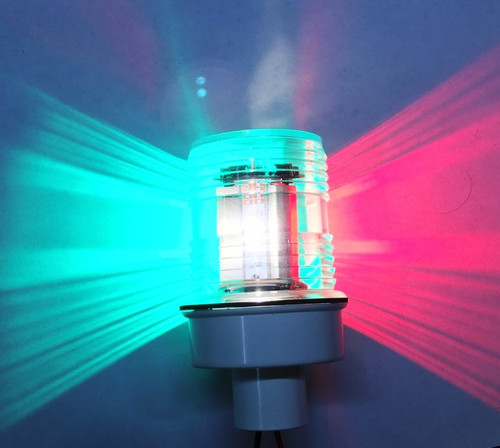
sku: N3-TRI-CMB
Smart led tri-color, anchor light, and strobe.

sku: N4-360-AA
All-around led anchor light for sailboat mast - series 40 type <20m.

sku: N4-TRI-124
Led tri-color and all-around anchor navigation stack light.
THIS AMAZING 2-WIRE LED LAMP IS A TRI-COLOR, 360 DEGREE ALL-ROUND ANCHOR LIGHT, AND SOS STROBE IN A SINGLE COMPACT FIXTURE. While this looks like an ordinary anchor light fixture, proprietary LED technology makes it function as a Tri-Mode fixture...
An economical 2NM LED All-Around Anchor Light fixture navigation light intended to be mounted on the top of the mast on larger sailboats. It replaces the Aqua Signal Series 40 type anchor lights, as it is of similar size and height. Prefitted with...
Specifications: 10-30VDC, low EMI design 5W max. Current draw of <0.50A @ 12VDC Brass / hardened plastic construction Easy mounting with four (4) screws, not included Red/Green/White LEDs for maximum transmissivity Sharp sector...
refresh the page.
Boats - By Owner "boats" for sale in Maine
- Starcraft Aluminum Boat $2,450 04573
- 23' Classic S&S Seafarer Kestrel Sloop $3,800 ROCKPORT
- 9' Custom Row Boat $1,250
- Wooden Lightning $4,000 South Freeport
- 22 ft Grady White with 200 hp 2012 Yamaha motor $4,900 Yarmouth
- Yamaha 2012 200 hp 2 stroke motor $2,900 Yarmouth
- 2021 Sailfish 242 CC $89,000 York
- 2013 Lowe 165 Fishing Machine PRO $14,000 Eliot
- 14 foot John boat $975 Pittsfield, Me
- 19'x21" Sea kayak $1,500 Kittery
- Aquaglide Chelan 140 Inflatable Tandem Kayak $600 Freeport
- 14’ BRIS INFLATABLE WITH 4hp OUTBOARD $350 Warren
- J/29 Ready for sailing $15,000 Falmouth Foreside
- 2006 Honda 5hp Outboard Motor $1,000 Freeport
- Wilderness Systems Sealutions kayak $650 Freeport
- 47ft Cutter Designed by Eldredge-McInnis $90,000 Portland
- 1988 Sea Nymph FM161 $3,000 Moultonborough NH
- Bunk Style Boat Trailer $1,100 Limington
- 16’ Aluminum 1980 Duranautic $2,100 Hallowell
- Pontoon Barge 11' x 23' $5,000 Thomaston
- 18 ' open skiff $3,200 Mariaville
- 24' C&C Sailboat $3,950 Quincy, MA
- Boats for sale searay $16,995 ROCKPORT
- 26’ Carver San Juan $10,000 East Boothbay
- 31' Mariner Ketch Refit 2024 - Beta 25 HP Diesel New with 20 Hours $45,000 Spruce Head, Maine
- 1978 28' SAM MORSE BRISTOL CHANNEL CUTTER $55,000 Wiscasset
- 2002 Baja outlaw Sst 25' $30,000 Georgetown
- Extra large Karavan Tandem Axle Boat Trailer $3,800 Portland
- 2022 Harris Cruiser 230 - Tritoon $32,900
- 2022 Harris Cruiser 230 $27,900
- 40' McArhtur Class 1990 $19,000 Winterport
- 33' Young Brothers Lobster Boat $70,000 Harpswell
- Wellcraft 18' boat with trailer $4,000
- Stingray super sport w/ Showtime trailer $750 Oxford
- Pearson Ensign $8,000 Boothbay Harbor
- Dinghy 3/16" plate aluminum $600 Saco
- 2008 Sea Doo Utopia 185 $8,000 Dresden
- 18' Godfrey Sweetwater Pontoon Boat with 25 HP Mercury Four Stroke Mot $5,000 Shapleigh, Maine
- Bayliner Cierra Express $1,500 Northport
- 13' Gamefisher tri hull boat $100 BERWICK Maine
- 2019 Yamaha 212X $47,000 Freeport
- 1981 Seaway with Trailer $1,000 New Gloucester
- 2024 SeaDoo Spark Trixx $17,500 North Berwick
- Old town loon 126 angler $900 Dresden
- 2022 TDB 21 SC $0
- 1994 Dynasty 17' Fiberglass Boat $2,250 Wayne
- Sabre 28 $5,000 Rockland, Maine
- 16ft grumman $2,500 Mexico
- 2022 Starcraft SVX 171 $34,500 Westbrook
- 2001 Seadoo GTX 951 $2,200 Augusta
- 15’ Corson $500 Rockland
- Boats $800 Rockland
- 3500# capacity axle model 72012 $200 Rockland
- Boats $1,500 Rockland
- 100’ Hydraulic Retractable Dock Ramp $26,000 Louds Island
- Sea Lion Tandem Axle Galvanized Roller Trailer $2,275 Limington
- CRAIG CAT POWER CATAMARAN - Sale or TRADE $7,990 Clinton
- 14' Crestliner Boat w/ Evinrude E-TEC 25 H.P. $4,250 West Bath
- Nordica 20 Sailboat with new trailer $10,000 Sedgwick
- Classic Pea Pod Boat $4,750 Tenants Harbor, ME
- lg 4ft ship boat anchor $250 Waterville
- 19' Seaway $10,500 Wayne
- 1999 Logic / Triumph 12ft Center Console Tender , 20hp Merc 4 stroke , Aluminum $3,500 Boothbay Harbor
- 12 ft. Jon Boat $700 Boothbay
- Royalex Canoe 16' $150 Poland
- Sun dolphin sportsman boat. I believe it's 10 ft I can measure it if interested $300 Palmyra
- 2023 seadoo fish pro trophy $16,200 Birch Harbor
- 2007 seadoo gtx $1,500 Saco
- Boats $450 Rockland
- Old Town Dirigo XT120 kayak $600 Corinna
- Beach chairs, floats, bike helmets $5 Naples
- 1989 Grumman Aluminum Pan Fish 2 with trailer $2,800 Cumberland
- Boats $350 Rockland
- BOSTON WHALER 13/15/17 TRADE !!!!! $5,500 Guilford
- Pontoon $37,000
- Sport Fishing....2017 Sailfish 245 ** DC ** $52,500 Kittery
- Pontoon Boat $17,900
- 1991 Merritt Walters steel cutter $37,000
- Regal $2,000 Windham maine
- Bass Cat 16' $5,400 Haverhill, MA
- Lund SSV-18 $4,200 Gray
- Melonseed Sailboat, Used Twice and only in fresh water, New Condition $11,900 Northampton Massachusetts
- Point Jude 15 - Wanted $3,000 Northampton Massachusetts
- Triton Trx179 Bass Boat $21,500 Wiscasset
- 17 ft seaway $4,500 Walpole
- 17 ft Wilderness Systems EPIC Kayak $599 Hollis Center
- 16 ft BEAUTIFULLY crafted Mariner Fiberglass Kayak $1,499 Hollis Center
- 1992 boat motor and trailer $400 Belfast
- 20 ft Stingray $7,500 WISCASSET
- Sting Ray $3,500 Newport Maine
- ANTIQUE RUNABOUT $885 CORNISH
- Archie Davis Jiffy - V- 22 22.5' x 8.5' $35,995 Belfast
- 1973 Folkparka 22' (Parca Marin)/ Inboard Deisel $5,000 Trenton
- Grady white $1,500 Brunswick
- 2008 Com-Pac Suncat Sailboat $13,000 Surry
- Valley Skerray RMX Kayak $399 Oakland
- 13’8” Adirondack Rowing Canoe $2,400 East Boothbay
- 1996 Deckboat-Regal Destiny $8,000 Rangeley
- Ocean Kayak Malibu 9.5 $250 Bangor
- Sisu 22 Sunbrella aft canvas $600
- Cobalt condesa $3,500 Windham maine
- Searay $2,600 Windham maine
- 20’ Shamrock with Crusader 220hp inboard. Twin axle trailer included $2,000 Pemaquid
- 24’. Ostkust sloop. Gorgeous. Shameful low price for caring new owner $3,000 Pemaquid
- Yacht Club single axle trailer plus boat $700 Belfast
- 20 Grumman canoe $850 Falmouth
- 2000 Lund $14,000
- Package deal $3,300 North Berwick
- 1973 Cal 27-1 Sailboat (FREE) $0
- Load Rite Tandem Galvanized Roller Trailer $2,850 LIMINGTON
- Classic Shamrock Inboard Diesel $15,000 Gloucester
- 12’ Jon Boat $600 South Berwick
- Dual Axle Boat Trailer $1,375 Limington
- Updated and Repowered Speedboat for Sale $49,990 Brooklin
- Twin engine Donzi $0 Boothbay
- 2007 Grady-White Adventure 208 w/ 2023 Yamaha 200 $50,000 Portland
- CANOE - GRUMMAN 17' $1,200
- ** 1995 MASTERCRAFT PRO STAR 205 ** $10,000 PLAISTOW NH
- BOAT BUMPER $40 Scarborough Maine
- 1993 F14 searayder Jet boat $600 NORTH BERWICK
- 1993 F14 sea rayder Jet boat $600 NORTH BERWICK
- 3 jet skis and trailer $800 Hollis maine
- Bat hovercraft $5,000 Hollis maine
- Lobster traps $40 Cutler maine
- Lobster boat $14,000
- 2006 Tracker Grizzly 1448 $7,000 Rumford Maine
- Magic Trail Galvanized Roller Trailer $1,595 Limington
- 2013 Skeeter ZX200 $33,500 Manchester
- 2017 215 LR Stingray $30,000 E. Winthrop
- Topper sailboat mast/boom rig needed $0 Brunswick
- 2014 Karavan galvanized roller trailer $1,800 Damariscotta
- 2020 Yamaha VMAX 115hp efi 4 stroke $9,500
- 22'ft 2020 Pioneer 222 Islander $79,000 Falmouth
- 2002 Parker 1801 $16,000 Portland
- 1973 Tartan 34C $5,000 Seal Cove
- 16’ scott makobe square stern canoe $1,850 Baileyville
- Looking for salvage type sailboat 30+ ft $1 Maine
- 6'x24 aluminum dock on wheels $2,000 Winslow
- ShoreMaster PWC/small boat lift $1,400 Winslow
- Used aluminum docks $900 Winslow
- Hewitt Pontoon Boat Lift w/Canopy Frame $4,000 Winslow
- Dagger Apostle Kayak $325 Randolph
- End of year sale $5,750 Sabattus
- 1986 Precision 18 $2,500 Harpswell
- Coleman 15 foot canoe $75 Waterville
- Folbot Aleut Folding Kayak $295 (OBO) Machias
- 1914 wood/canvas Old Town Canoe Project $130 Damariscotta
- 2007 Stingray 195 LX $10,000
- Partially restored wood/canvas Old Town Canoe $100 Damariscotta
- 1987 Saroca + 2004 trailer $1,300 Northport , Maine
- Price Reduced!!! $42,500
- 2009 Wellcraft 210 Coastal $26,900 South Portland
- 2016 Kawasaki Ultra LX Jet Ski $7,000 Topsham
- Cedar strip canoe $650
- 1976 O’Day Daysailer $1,750 South Portland
- LUND Boat, Motor, and Trailer wanted badly $7,500 Gorham, Maine
- Glastron GT150 Project $100 Portsmouth
- 2009 Suntracker Pontoon $12,000 Alfred, Maine
- Drascombe Driver, 18 ft. $4,500 Camden
- WTB Norseboat sailboat $1 Camden
- CCMK2 1982 Sailboat $11,500 Tenants Harbor
- Pacific Seacraft Orion 27 $23,900 Georgetown
- 12' sun dolphin $550 durham maine
- 17 ft Sea Kayak $900 Orrs Island
- 2014 Hurricane Sun Deck 187 $19,000 Winthrop
- 2007 Cobalt 252 $20,000 Yarmouth
- 2002 Triton Tr-175 $10,000 Auburn
- 1997 20 FT Chris Craft $7,000 NAPLES
- 2017 Regal 2500 - WOW $61,000 Alton Bay
- Old Town Classic Sail Canoe $3,200 Ellsworth or Greenville
- Boat - Lund Alaskan $8,200 Augusta
- Boston Whaler $11,000 West Bath
- Hydro slave puller $300
- Trojan 32' Sport Fisherman 1974 $10,000 Rockland Maine
- Oldtown loon120 $350 Dresden
- 24’ Eastporter $22,500
- 1989 motorboat 17ft $2,000 Portland
- Inflatable Dinghy and Outboard Motor $1,200 Belfast
- Stellar SEA surfski $2,500 Phippsburg
- ELECTRIC KAYAK - OLD TOWN AUTOPILOT 120 - BRAND NEW $4,300 POLAND
- HOBIE MIRAGE OUTBACK PEDAL FISHING KAYAK - BRAND NEW $3,700 Poland Spring
- 2 - Ocean Kayak Scrambler 11' Sit on Top Used $800 Poland
- TANDEM KAYAK - BRAND NEW NATIVE ULTIMATE FX15 FISHING KAYAK $1,650 Poland Spring
- Kawasaki Jet Ski Package - 2 Ultra 310X jet skis and aluminum trailer $17,500 Auburn
- PUNGO 120 KAYAK by WILDERNESS SYSTEMS - BRAND NEW $1,100 Poland Spring
- SQUARE STERN CANOE - OLD TOWN DISCOVERY SPORT 15 - BRAND NEW $2,400 POLAND
- Old Town Otter Kayak $350 Poland
- SEA / TOURING KAYAK - OLD TOWN MILLENIUM 174 $650 Poland
- CANOE - OLD TOWN DISCOVERY 133 - BRAND NEW $1,400 POLAND
- 12ft aluminum $2,300 Lewiston
- SeaRay 290 Amberjack - 2005 $49,500 Scarborough
- 2023 Sea-doo GTR- Package deal! $16,000 Levant, Me
- Grady White Tournament 190 $10,500 Westbrook
- 1987 Island Packet 38' Sailboat $65,000 Stockton Springs
- 24' 1965 Chris Craft, Sea Skiff. $15,000 Old Saybrook
- CRUISERS® MACKINAC 22’ CABIN CRUISER WITH 26’ HOLSCLAW® TRAILER $4,000 New Gloucester
- Kiwi Kopapa Kayak $150 Hiram, MA
- 16' Aluminum Canoe $295 Lyman
- 2019 Bayliner Element e18 $17,000 Gorham
- pontoon boat $2,500 poland
- 21’x20’ Stainless Steel Floating Dock $7,500 Pemaquid
- Bass tracker $6,000 Lewiston
- Gorgeous 1984 cape dory 33 sloop $12,000 Wiscasset
- 2015 Tahoe gt2385cr. 115hp mercury. Well kept $30,000
- 2021 Holland Skiff 14’ - $19,500 OBO (Harwich Port) $19,500 Harwich Port, Cape Cod
- 2016 Lund WC-14 W/2016 trailer $5,000 Canaan
- Carolina Sea Kayak and Thule J Rack $450
- Galvanized Boat Trailer $1,100 PORTLAND
- 2016 tracker Pro170 $10,750 Bridgton
- 17’ passamaquoddy lobster skiff $3,500 Hope
- Rhodes 19 CB $1,500 Spruce Head
- 2016 Tahoe 450 TS 19ft $19,500 Orland
- 31' Slickcraft $7,500 Orland
- Beautiful cedar kayak - very light $850
- NEW YAMAHA OUTBOARDS - AVAILABLE NOW $0 FREEPORT
- 1997 GRADY WHITE ADVENTURE 208 $12,000 FREEPORT, MAINE
- NEW BOAT TRAILERS - IN STOCK NOW! $0 FREEPORT
- 2008 Lund Outfitter 1750 SS $12,000 Stockholm
- 2005 SEA PRO 270CC $49,000 Fairfield
- Old Town 172 Tripper Canoe 17’-2 The Legend!! No Longer In Production! $1,800 Augusta
- Edgewater 18 $12,500 Boothbay
- 17ft Center console with 70hp Yamaha $3,500 Greenville
- 18ft Bow Rider with 115hp $3,000 Greenville
- 20ft MFG and Trailer $1,000 Greenville
- TRACKER TARGA V-8 Combo $33,500 Barrington
- MAST NEEDED for HOLDER 17 VAGABOND 17 $0 CORNISH
- PRICE CUT - 15FT Aluminum Skiff $650 Cumberland
- Safe Boat Defender 25 $225,000 Bar Harbor
- Fishing boat $2,800 Milo
- Aluminum V-Hull Jon Boat 11’ $700
- Sea Doo Sportster Boat $6,500 Otis
- 21 kencraft and 18 privateer $4,500 Phippsburg
- brand new suntracker 16ft dlx partybarge $24,700 Corinth
- 1974 Mako 17’ CC $6,300 Nobleboro
- 2014 Sea Ray Sundeck 24' $30,000 Biddeford
- 1895 Crosby Catboat $24,000 Cumberland
- 17ft Kayak $200 Auburn, ME
- Driftboat $1,800 Orono
- SeaDoo GTI RFI LE Jet Ski $2,500 Gray
- 1957 Starcraft 14’ $1
- 9'8" Inflatable and 3.5 hp Mercury $900 Saco
- Cranberry Island Western Way $29,500 Eliot, Maine
- Dagger Royalex Canoe $650 Belgrade
- Stingray $7,000 Belfast
- 19 ft bass boat $4,000 Gardiner
- 2007 Hurricane 238 RE-3 O/B $15,000 Naples
- 1994 Bayliner Ciera 2355 $9,000 Falmouth
- Hydra Sport Ocean 23' Bowrider + trailer $13,000 Dover Foxcroft
- 26 ft Ericson sloop $2,500 Peaks Island
- Seaward Guide 17 Kevlar Kayak $4,000 Portland
- Old Town Katahdin canoe (Cape Elizabeth) $600
- Custom Built San Juan Dory Skiff 16ft. $4,600 Harpswell
- 1995 Santana 2023a $7,000 Raymond
- 15 foot Canoe $300 Augusta
- HOBIE MIRAGE Tandem Kayak $850 Augusta
- Robalo 26' $1 Thomaston
- Nor’sea 27 $28,500 Franklin
- 1995 chaparral 2135 SS $4,200 Hollis Center
- 12 foot boat with 3.5hp motor new $1,150 old town
- 21 Foot Coastal Wellcraft $10,500 New Sharon
- Puffin Tender $500 Falmouth Maine
- 2000 Sea Doo GSX $1,800 Wilton
- 28’ lancer 1980 $4,500 Eddington
- Sailboat for sale! $6,000 Northport
- Pro line center console fishing boat 20 feet $16,500 South Portland
- 12-foot boat with 3.5hp motor new. $1,307 old town
- New 14' Alumacraft $10,999 Casco
- 2018 Alumacraft 165 Classic $16,500 Casco
- 18' 1966 MFG $3,200 Mariaville
- 1977 crestliner 85 HP mariner with spare engine and Cobia Seats AND TRAILER $700 Boothbay
- 21’ Center Console $20,000 Scarborough
- Shoreline Dual Axle Boat Trailer $2,850 Limington
- Grady White Atlantic Adventurer 21' $3,999 Northport
- Pontoon Boat $13,000
- Hunter 30 1983 $3,995 Newtington, NH
- Cresstline Nordic motor boat $6,000 South Paris
- 1988 34ft Wellcraft $2,100 Gouldsboro
- Commercial Lobster Boat $55,000 Newcastle
- Seaward Quest X3 HV sea kayak, fiberglass $1,800 Falmouth
- LUND ALLUMINUM 12.6 $2,450 Palermo
- 1973 Boston Whaler 19' Outrage $5,000 Gray
- 2020 9’6” Coastal Inflatable Boat $850 Standish
- Great camp boat $450 Naples
- Lund SSV 16 Boat Still Looks Close To New! Loaded With Extras!! $7,999 Augusta
- Corson $700
- Outside Boat/RV storage $1 West Newfield
- Nitro Z7 $8,600 Lovell
- Portabote 10' 8" folding boat. Weighs only 78 lbs. $1,200 Concord, NH
- Starcraft 14’ $2,700 Rangeley
- 16' Mirro Craft Boat for sale $2,900 Topsham, ME
- Cheoy lee offshore 33 $12,500 Eastport
- O'Day Day Sailer $1,500 South Portland
- 2016, 1850 pro tiller alum. Crestliner Boat $25,000 Bangor
- rhodes 19 sailboat $3,000 southport
- Additional USED Paddleboards $1 naples
- Alden 45 Sailboat $0 Falmouth Foreside, Maine
- 2020 ALUMACRAFT 165 CS 50 HP EVINRUDE, GARMIN, TRAILER, BIMINI,COVER $19,999 Bethel
- Lowe 1648 Aluminum Jon boat w/trailer + NEW 20HP Mercury Outboard $5,250 Sebago
- BOAT WANTED have a trade for one $0 Lee
- Galvanized Bunk Style Boat Trailer $1,425 Limington
- 1994 Carver Santego $35,000 Scarborough
- 1996 searay and 1994 maxum $4,000 Freeport
- Ranger R21EC Tug $52,000 Orrington
- Wilderness Pungo 120 $750 Fayette
- Scout Dorado 205 with Yamaha 150 $21,500
- 22ftr lincoln canoe with custom trailer will seperate $2,200 Moscow
- Kayak-12ft Wilderness systems $325 Farmington
- 1996 seadoo sp with dual place trailer $1,500
- Lobster Boat - 31 Holland $83,000 Lamoine
- 2002 SeaRay sundeck bow rider $16,500 Augusta
- 1981 C&C Landfall 38 $8,500 Falmouth Maine
- skiray 190 $8,500 Augusta
- 3 Sea Kayaks - Excellent Boats - Super Deal $950 Southport ME
- Canoe and Trailer or will seperate $2,200 Moscow me.
- 1997 BOSTON WHALER BOAT, 2019 SUZUKI 4 STROKE $13,400 Camden
- Necky Tandem Kayak $1,000 Falmouth
- 63 starcraft $1,900 Waterford
- Controversy 36 yawl $15,000 South Freeport
- Aluminum Runabout 1958 14' Eaton Thornes Cadillac $1,250 Bethel
- 1998 MAY-CRAFT 1700 CC w/ 2020 HONDA $9,900 FREEPORT, MAINE
- 2023 SCOUT 175 SPORTFISH - DEALER LEFTOVER $39,900 FREEPORT
- 2014 BOSTON WHALER 220 OUTRAGE - CENTER CONSOLE $72,500 FREEPORT, MAINE
- 2019 CHRIS-CRAFT LAUNCH 30 BOW RIDER - ONLY 65 HOURS $129,000 FREEPORT, MAINE
- Fiberglass Dinghy/Yacht Tender $845 Owls Head, Maine
- HANGTIME KAYAK by PERCEPTION - BRAND NEW $900 POLAND
- 2013 starcraft $2,900 Rangeley
- Wind Surfer / Stand Up Paddle Board $50 Mount Desert
- 17 foot Bowrider, Sunbird $3,500 Windham
- 2021 21SLX Bennington Tritoon with trailer $46,500 Lewiston
- Elegant Finnish Designed H-35 | A Sailor’s Prize $26,500 Brooksville / Buck's Harbor
- Baja speedboat and trailer $3,980 Auburn
- 1928 Kennebec Canoe Company 18” Model A $4,000 Eliot
- Mackenzie bass boat $7,000
- Wellcraft 250 Sportsman $14,300 Belfast ME
- 1960 Chris Craft Ski Boat $22,500 Wayne
- Double camo kayak $450 Mt Vernon
- Stellar 14 fiberglass kayaks, two $3,000 Rockport
- SYLVAN 18 OB BOWRIDER, 60HP JOHNSON, SHOR LANDER TRAILER $5,495 MILLINOCKET-CHAMBERLAIN LAKE
- Soverel 27 $3,500 Falmouth
- 1976 century restora $3,500 Westbrook
- 2008 Trophy 1802WA Fishing Boat $15,900 Casco
- 215 Searay $4,000 East Boothbay
- Crawford 16’ Swampscott Dory $5,500
- Coleman sd140 scanoe 14’ $400 Sabattus
- 21’ Scott canoe cover $750 Lincoln
- 2006 Boston Whaler 32 Center Console $96,000 Eliot, Maine
- Lobster traps $135 Corea
- Nice little sailboat ready to go $850 Westbrook
- SEA FOX 2011 236CC COMMANDER $38,500 West Bath
- Hobie Mirage Outback tandem $900 Belfast
- 1996 James West Lobster boat $55,000 Portsmouth, NH
- 2017 Sun Tracker 18 ft w/60 horse mercury $20,000 Holden
- 2016 Sweetwater Pontoon $25,500 Belgrade
- twin kayak $700 Springfield
- Pelican Voyage Deluxe 5-person pedal boat $500 Sinclair, Maine

- TripAdvisor
- Testimonials
- Travel Tips
Mast with Sails under Moonlight
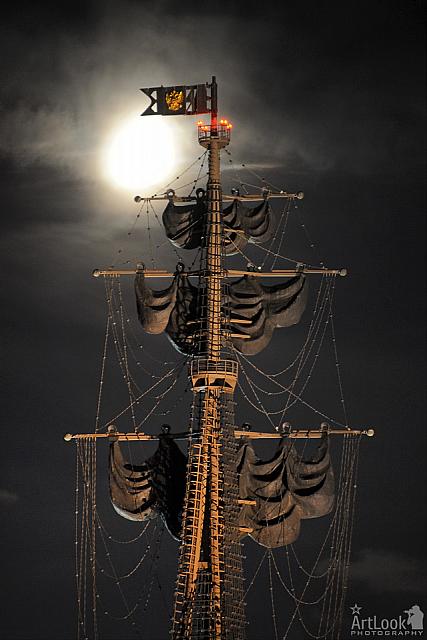
About Me in Short

My name's Arthur Lookyanov, I'm a private tour guide, personal driver and photographer in Moscow, Russia. I work in my business and run my website Moscow-Driver.com from 2002. Read more about me and my services , check out testimonials of my former business and travel clients from all over the World, hit me up on Twitter or other social websites. I hope that you will like my photos as well.
See you in Moscow!
- View full size
- Owner: Moscow Guide & Driver
- Date: September 12, 2016 04:22:00 pm EDT
- File name: ALP-2016-0912-342-Mast-with-Sails-under-Moonlight-Monument-to-Peter-Great-Night-Moscow.jpg
- Tags: Russia , Monuments , boat , moonlight , night moscow , Peter the Great Monument , Mast , Moscow by Night , Moscow
GPS Location of the Photo
Google maps.
- GPS Map of this album
- GPS Map of Moscow Guide & Driver's pictures
Random image

Taking a Bow
Soldiers of Kremlin Regiment down on one knee (kneel down) and bow heads in respect of presence audience who watched their military skills during fascinating ceremonial of changing of foot and cavalry guards of the President’s Regiment on Cathedral square in Moscow Kremlin.
Featured Tags
- 273 photos are tagged with architecture
- 199 photos are tagged with cathedrals
- 305 photos are tagged with churches
- 294 photos are tagged with Dear Clients
- 260 photos are tagged with lights
- 1875 photos are tagged with Moscow
- 306 photos are tagged with Moscow by Night
- 194 photos are tagged with Moscow cityscapes
- 264 photos are tagged with Moscow Kremlin
- 326 photos are tagged with night moscow
- 426 photos are tagged with Orthodox Churches
- 226 photos are tagged with Red Square
- 2538 photos are tagged with Russia
- 209 photos are tagged with twilights
- 350 photos are tagged with Winter
Take one of these exciting tours:
- Moscow Highlights
- Discovering the Golden Ring of Russia
- Arts & Culture Tours
- Moscow by Night tour


Please verify you are a human
Access to this page has been denied because we believe you are using automation tools to browse the website.
This may happen as a result of the following:
- Javascript is disabled or blocked by an extension (ad blockers for example)
- Your browser does not support cookies
Please make sure that Javascript and cookies are enabled on your browser and that you are not blocking them from loading.
Reference ID: 993107e7-74f8-11ef-96db-8871db045898
Powered by PerimeterX , Inc.

COMMENTS
Get the best deals for Sailboat Mast Light at eBay.com. We have a great online selection at the lowest prices with Fast & Free shipping on many items!
An economical 2NM LED All-Around Anchor Light fixture navigation light intended to be mounted on the top of the mast on larger sailboats. It replaces the Aqua Signal Series 40 type anchor lights, as it is of similar size and height. Prefitted with a user-replaceable Marinebeam constant-current 10-30VDC BAY15d high-output LED bulb and 8" of ...
0.40 Amps at 12VDC. 5.6" High x 3" Wide (7.7" inc wings) x 2.4" Deep. 6000° White LED light. USCG/COLREG/CE ABYC A-16 Certified. EN and CE Compliant for RF Interference. IP67 Ingress Protection (fully waterproof) For sailing vessels up to 20M (65 ft) Fits a wide variety of mast profiles. The bright 4W LED deck light is equivalent to 35W of ...
0.15A @ 12V - Tri-Color Mode. 0.60A @ 12V (intermittent)- Strobe Mode. 60mm x 90mm (2-3/8" x 3-9/16") 8" wiring pigtail, no polarity required. Mounts to flat surface, with 3 screws, or can be pole mounted. Pole mount allows extending the height with user supplied 1/2" PVC plumbing pipe and fittings. Smart Switching LED Tri-Color / Anchor / SOS ...
Series 34 Mast Mount LED Tri-Color/Anchor Navigation Light. Model # 14146880 Mfg # 34706-7. $104.99 $299.99. Additional 50% off savings is reflected in final price above. Protect Your Purchase |.
Perko White All-Round, Fixed Mount, 360deg. Navigation Light, 12 volt, 4-1/2"
Lalizas Flexy Emergency Navigation Lights. £ 12.32 £ 11.95. AAA All-Round LED Tricolour Pole Light. £ 27.95. Navigation Light Classic N12. £ 7.95 - £ 9.95. Nasa Supernova LED All round White. £ 65.03 £ 64.95. Talamex All Round Nav Light With Bracket - Battery Powered.
The Durable Marine grade material offer by Pactrade Marine Boat Combo Mast Head & Deck Light using clear polycarbonate lens. Polycarbonate housing is shock-resistant, non-corrosive and seawater resistant. It is ideal for almost all kinds of boat up to 12 Meters. The color of the light is warm white.
Five Oceans Anchor Light, Combination Masthead and All-Around Lights, Fold Down, LED Boat Navigation Lights, 12V DC, USCG 2NM Rule, 10.5" Fixed Mount, for Sailboats and Powerboats - FO4595. 10. $3390. FREE delivery Mon, Aug 12 on $35 of items shipped by Amazon. Or fastest delivery Fri, Aug 9.
Five Oceans Anchor Light - Stern Lights for Boats, Boat Lights Navigation, 12V DC, USCG 3NM Certified, 3-inch Surface Fixed Mount, Boat Stern Light for Pontoon, Fishing Boats, Bass Boats - FO3838 ... 12V DC, Meets USCG 2 NM Rules, Mast Mount for Sailboat - FO2071. 3.8 out of 5 stars. 43. $84.90 $ 84. 90. FREE delivery Wed, Aug 7 . Or fastest ...
8" height x 3" diameter. This combination tri-color / all-around anchor navigation light for sailboats is a great and economical LED solution to freshening up the top of your mast. The tri-color's LEDs lower the wattage by 80% while providing a brighter output than traditional 25W incandescent stack lights.
3562 Side Mount Masthead/Deck Navigation Light, 2 Nautical Miles Visibility. NaviLED PRO Masthead LED Navigation Lamp, 3 Nautical Miles Visibility. 2984 Side Mount Masthead Navigation Light, 3 Nautical Miles Visibility. OGM Series Q Collection Mast Mount LED Steaming/Masthead Navigation Light.
1984 Sea Sprite 34' for sale. Built in Rhode Island by C.E. Ryder. 5ft. Draft. Fractional sloop rig, Full keel, Airex cored hull, keel stepped mast, roller furling headsail, keel hung rudder, good running Universal diesel engine, wheel steering, and lots of bronze. The boat is sailed weekly, in good condition, and ready to motor or sail away ...
Young Marine 9 inch 3 Nautical Mile White LED Fold Down Boat Stern Light Boat Anchor Light for Pontoon and Fishing Boat Navigation Anchor Lights All Round 360° White LED 12-24V ... Mast Mount for Sailboat - FO2071. 3.9 out of 5 stars. 41. $84.90 $ 84. 90. FREE delivery Tue, Jun 25 . Or fastest delivery Mon, Jun 24 . Small Business. Small ...
The MC Sailing Association originally formed in Shreveport LA, 1971. Since then, the MC class has grown to be one of the top one-design sailboat racing classes in North America. The scow design maximizes speed yet provides unmatched stability. There are more than 113 active fleets nationwide. An original design by the Melges family in 1956, it ...
Persson Marine Belgium. The snipe mast factory, our services. Get the extra bend with the Persson Teardrop mast. The standard mast in over 20 years of Snipe sailing. Want more fle
Property details for Boat Of Cluny. One of many properties for sale in Aberfeldy, Perth and Kinross, PH15 2JT from Savills, world leading estate agents. ... including rights of access and rights of way, whether public or private, light, support, drainage, water and wayleaves for masts, pylons, stays, cable, drains and water, gas and other pipes ...
4317A S Sheridan Rd , Tulsa OK 74145-1120. Keep your products running from day-one with our perfromance guarantee. home. categories. marine electrical. lighting. exterior lighting. navigation lights. Nothing beats a day on the water but a pleasant night cruise is a close contender.
SALE. Quick view Details. sku: N4-TRI-124. ... All-Around LED Anchor Light for Sailboat Mast - Series 40 Type <20M. An economical 2NM LED All-Around Anchor Light fixture navigation light intended to be mounted on the top of the mast on larger sailboats. It replaces the Aqua Signal Series 40 type anchor lights, as it is of similar size and height.
Shop Winter Sale. 1-16 of 749 results for "boat mast light" Results. ... Acouto Navigation Signal Light Marine Navigation Light Boat Mast Lamp 12V/24V 135 Degrees Boat Signal Light 3W IP66 LED Navigation Mast Lamp for Yacht Fishing Boat Cruises. $13.10 $ 13. 10. FREE delivery Tue, Jan 9 on $35 of items shipped by Amazon.
Topper sailboat mast/boom rig needed. $0. Brunswick 2014 Karavan galvanized roller trailer. $1,800 ... very light. $850. NEW YAMAHA OUTBOARDS - AVAILABLE NOW. $0. ... Sailboat for sale! $6,000. Northport Pro line center console fishing boat 20 feet. $16,500 ...
Description. Flexible flaps allow fast-and-easy attachment to common mast profiles. Functions are controlled separately. The masthead light is an easy-to-change, long-life, 25W vertical-filament tungsten bulb. The deck light is a watertight, sealed-beam 50W halogen bulb. For powerboats and sail boats to 20m (65.5'). 8-1/4"H x 3-3/4"W.
«Mast with Sails under Moonlight» Top of the 98-metre-high monument to Peter the Great made in a shape of masted vessel with stature of Peter the Great on the boat under moonlight in one of Autumn evenings in 2016. Next Previous 63 of 145 ... 260 photos are tagged with lights; 1875 photos are tagged with Moscow;
31mm Marine LED Festoon Bulb for Navigation Light, Boat Light Bulbs for Boat Anchor Light, Boat Navigation Lights, Mast Masthead Light, Super Bright 12 Volt Bulbs for Boat Lights 2PCS. 4.6 out of 5 stars. 1,216. 100+ bought in past month. $9.99 $ 9. 99. FREE delivery Mon, Feb 19 on $35 of items shipped by Amazon.
Pedestal Mount LED All-Round Anchor Navigation Light. Pedestal Mount Tri-Color LED Navigation Light with Anchor Light, 3-Wire. Series 5500 Waketower LED All-Round Navigation Light. NaviLED 360 Pro LED All-Round Anchor Navigation Light, Black Housing, 2 Nautical Miles Visibility. 2010 Fold-Down Anchor Light, 2 Nautical Miles Visibility.